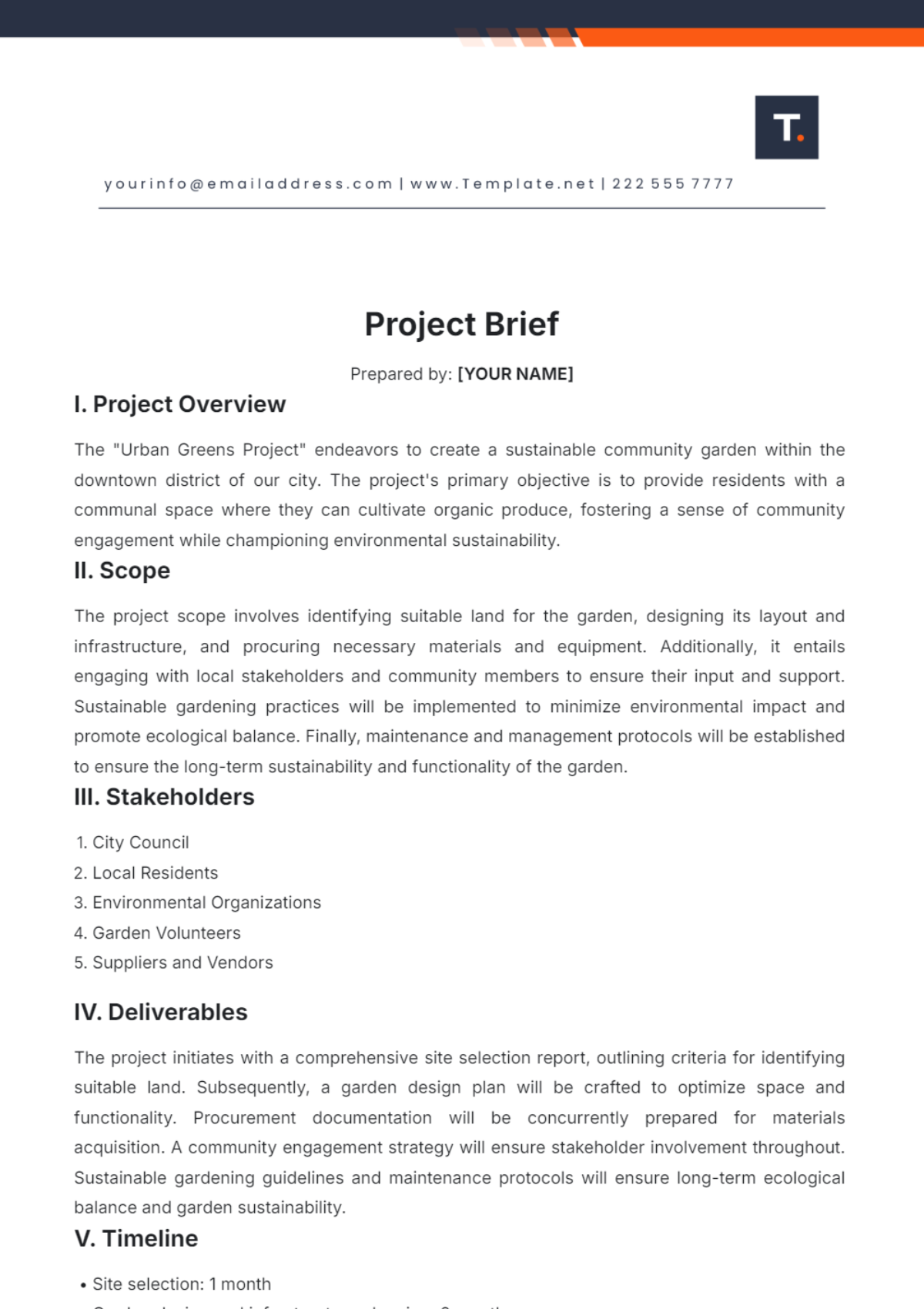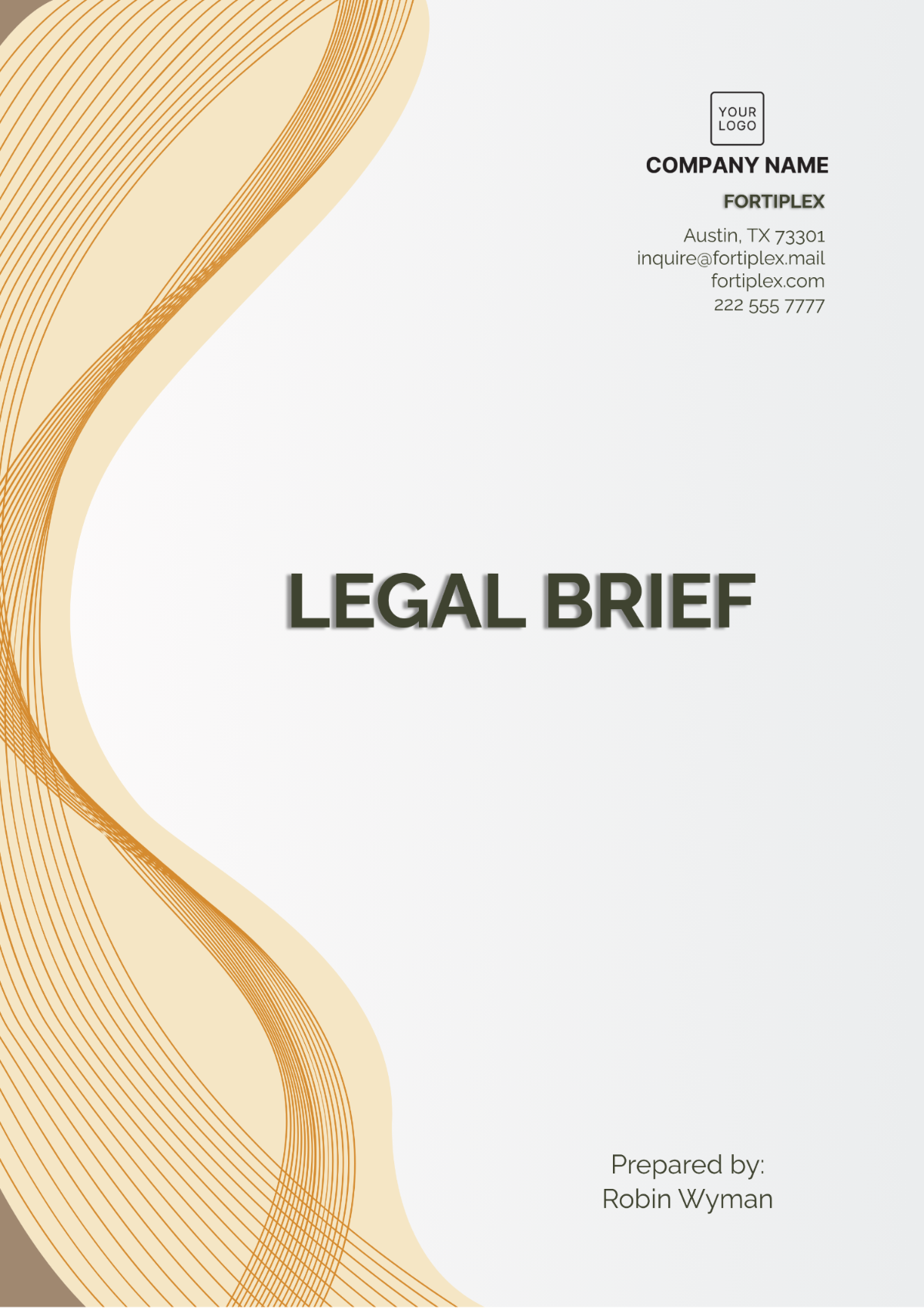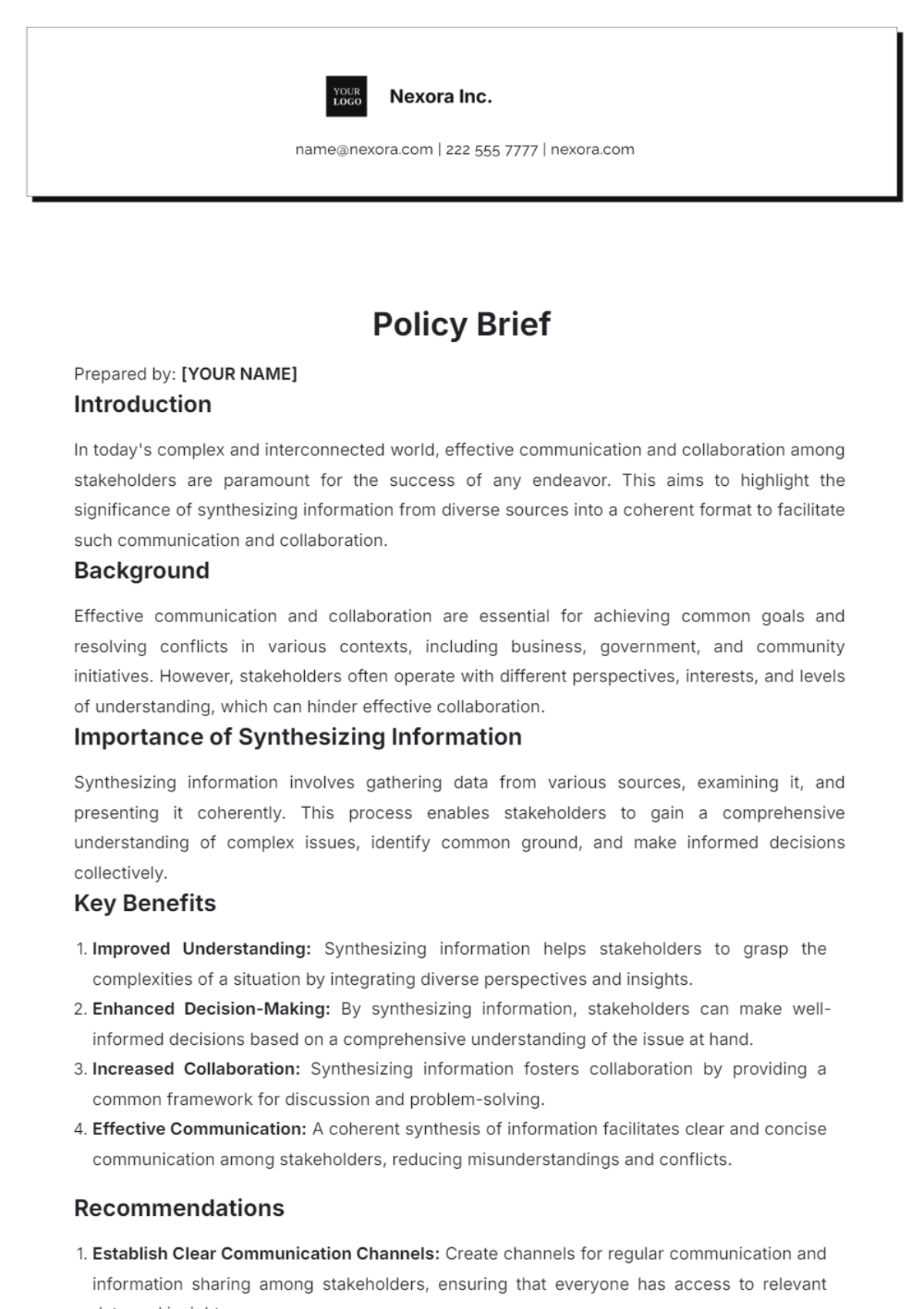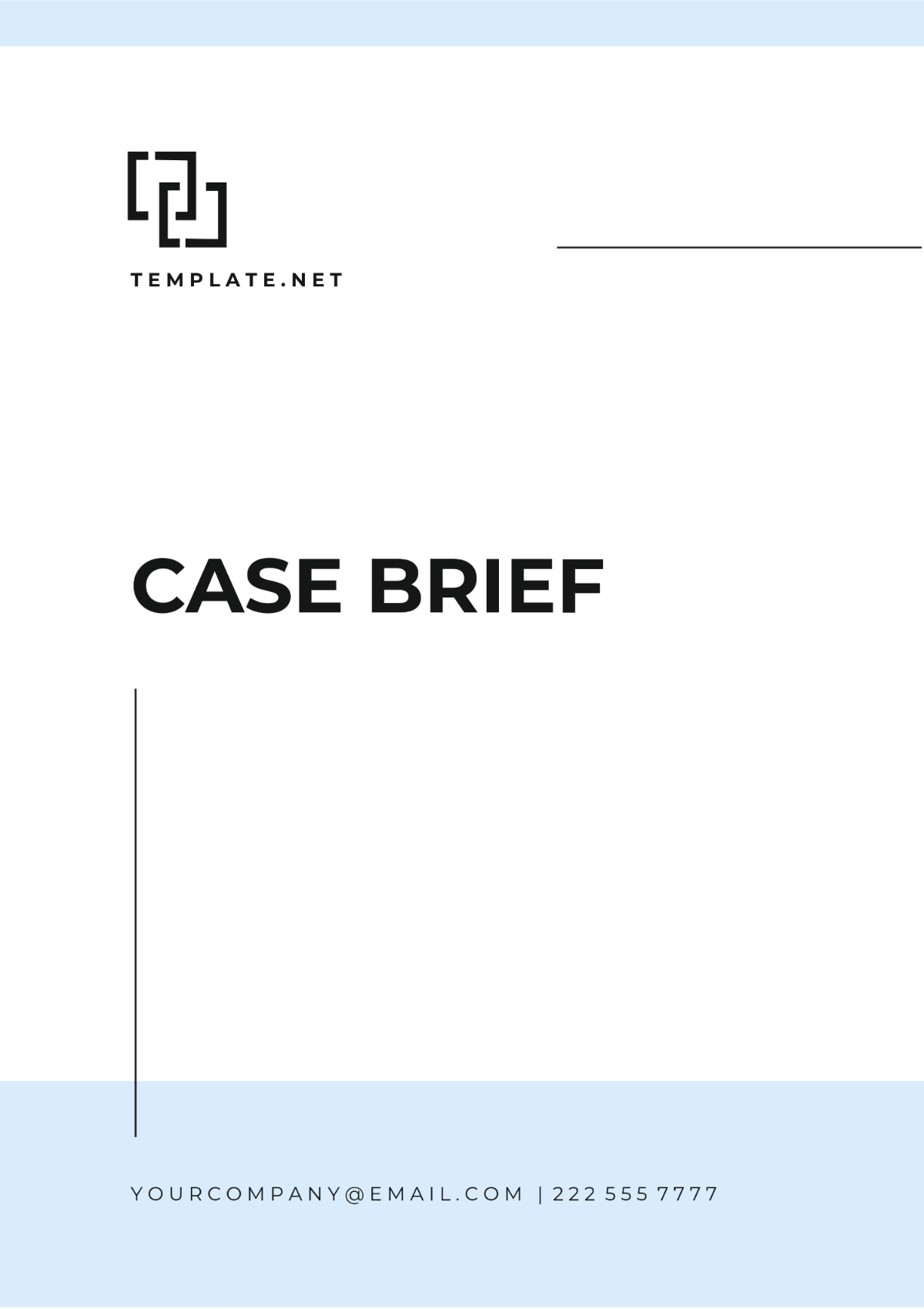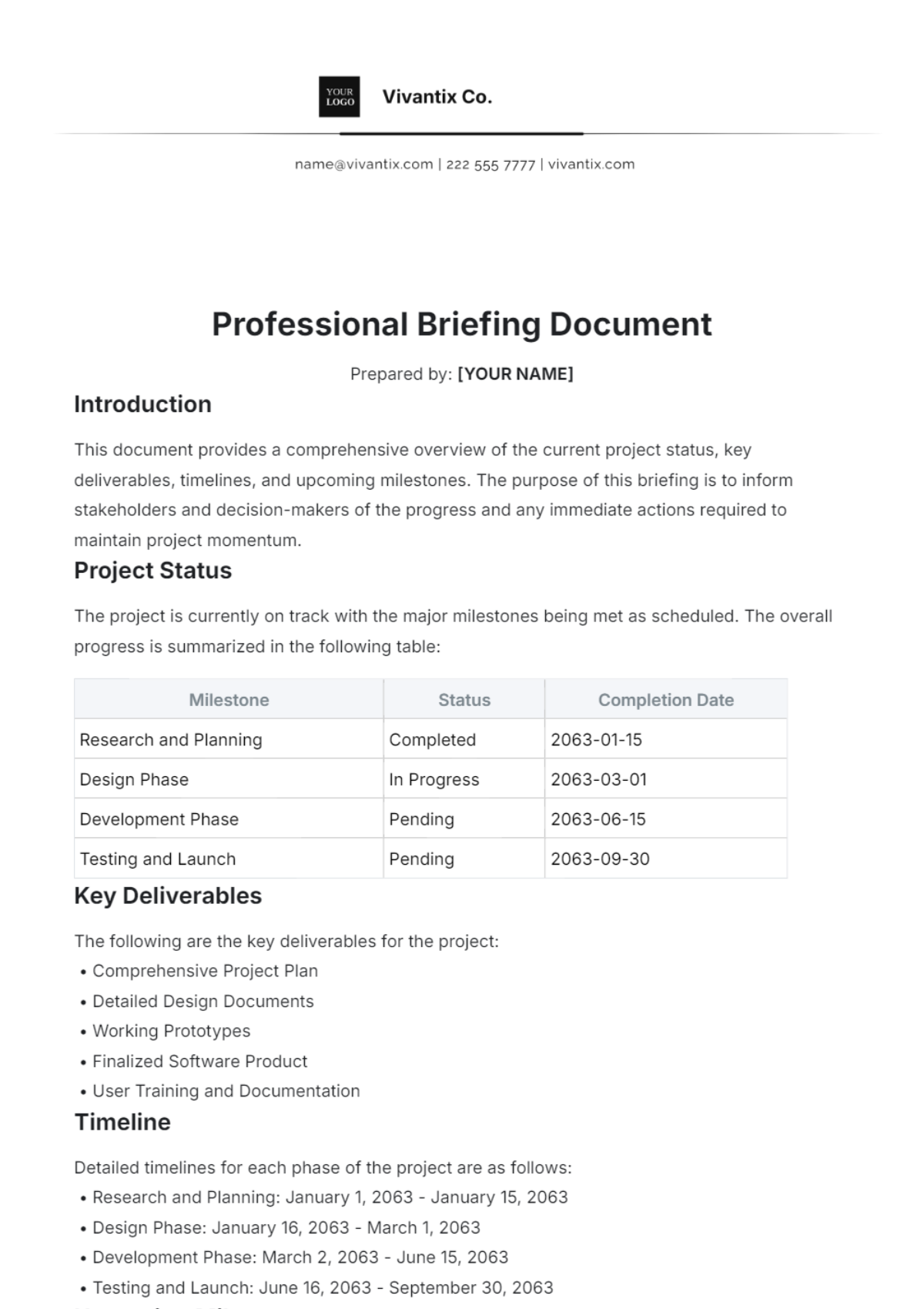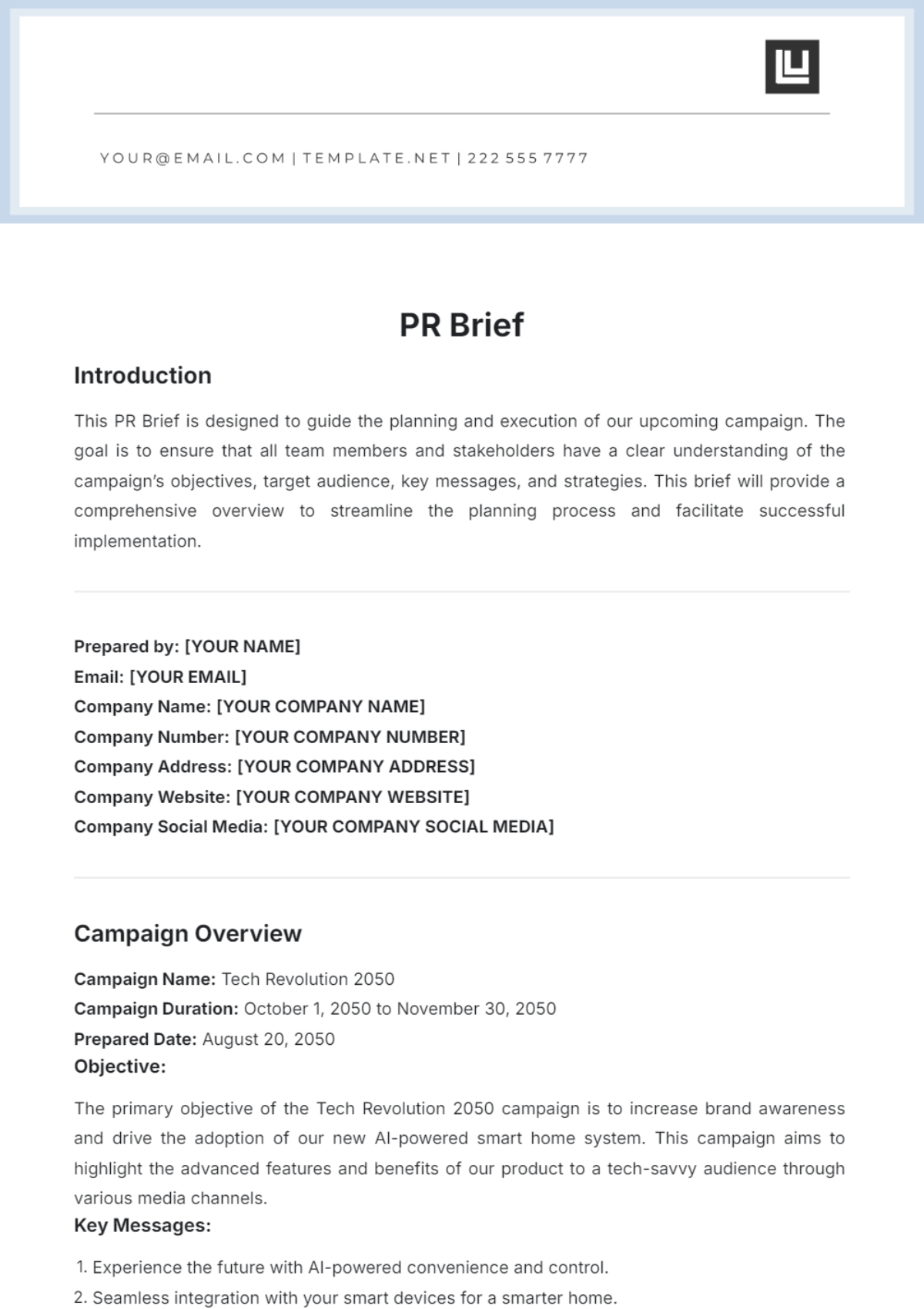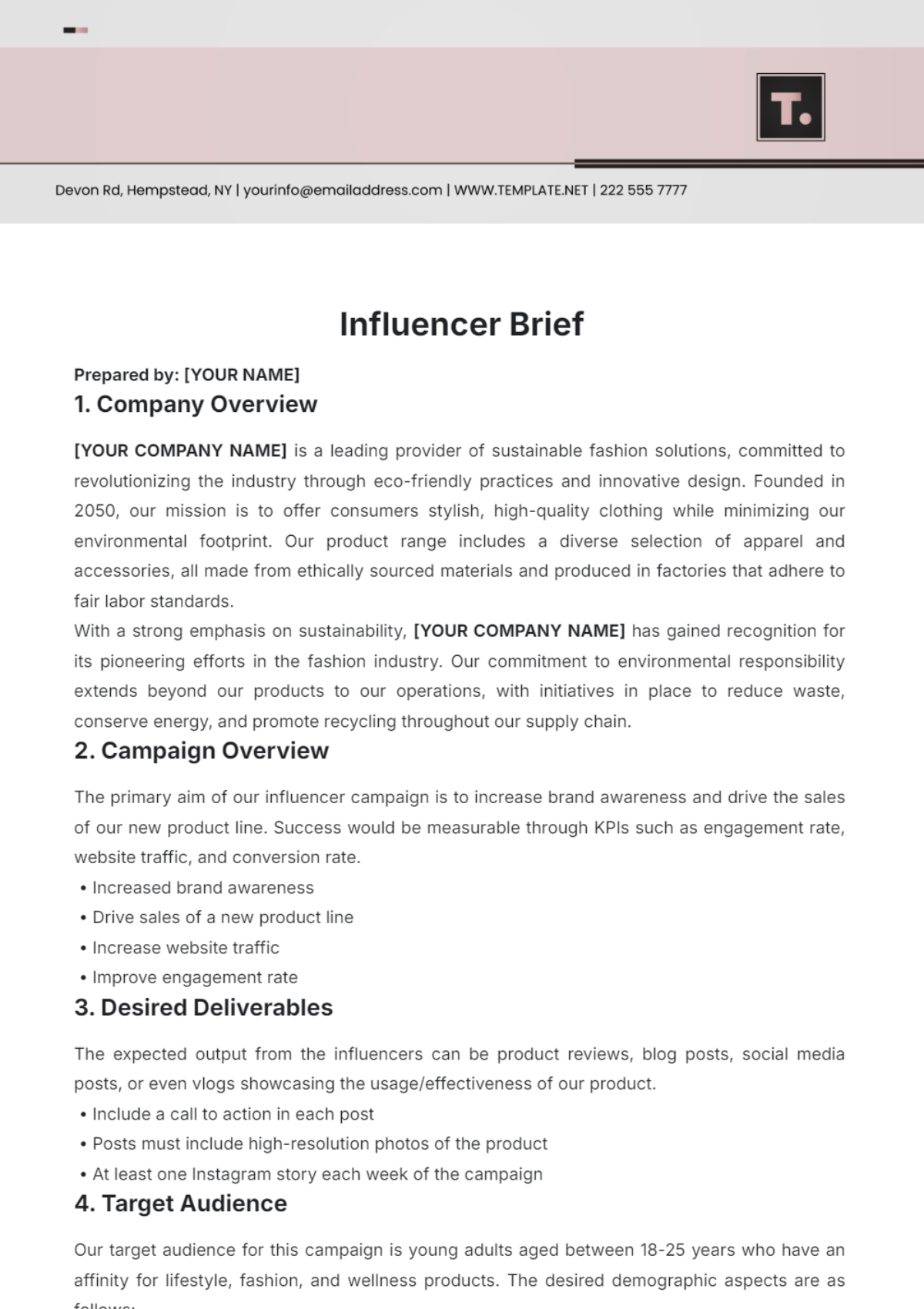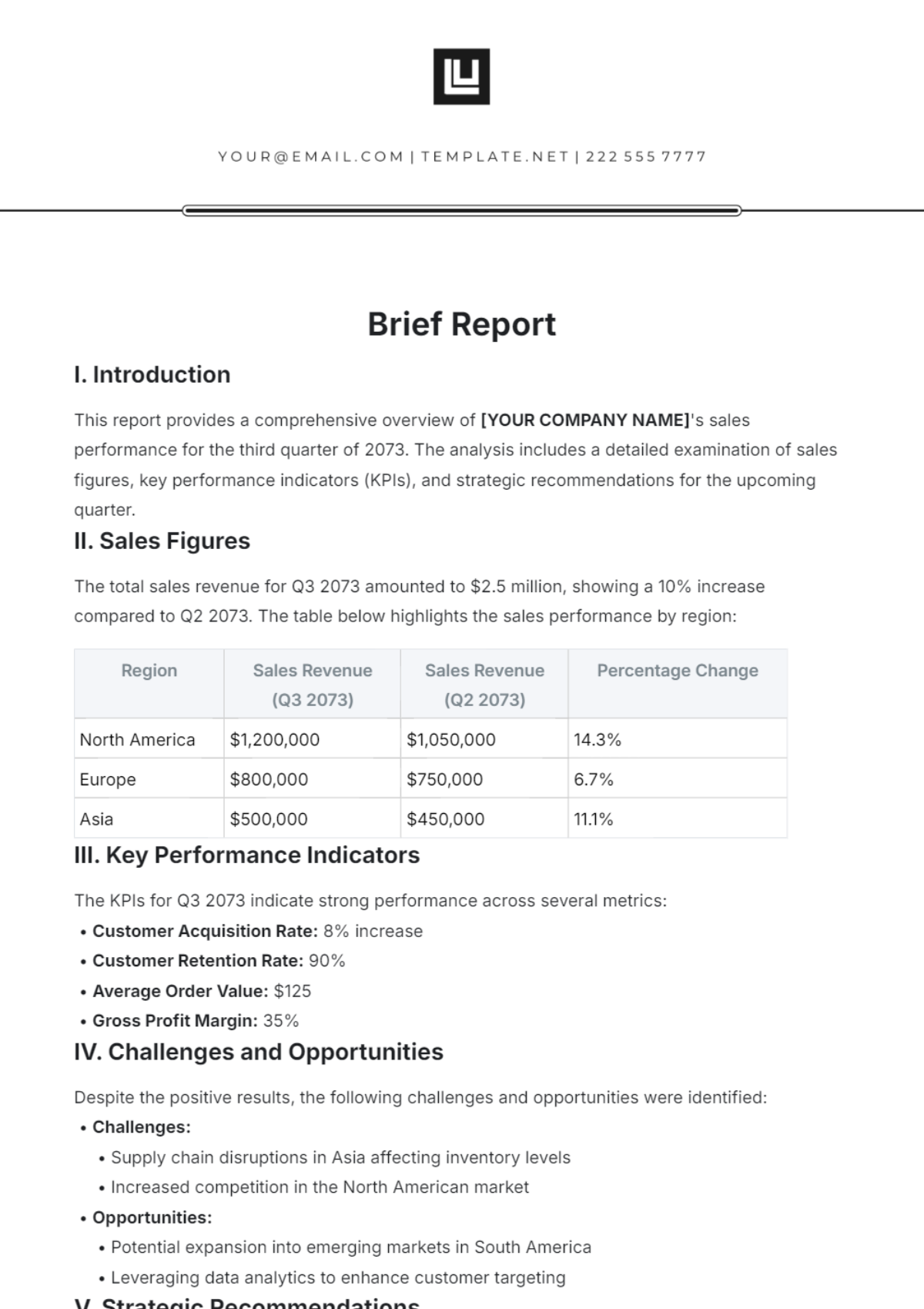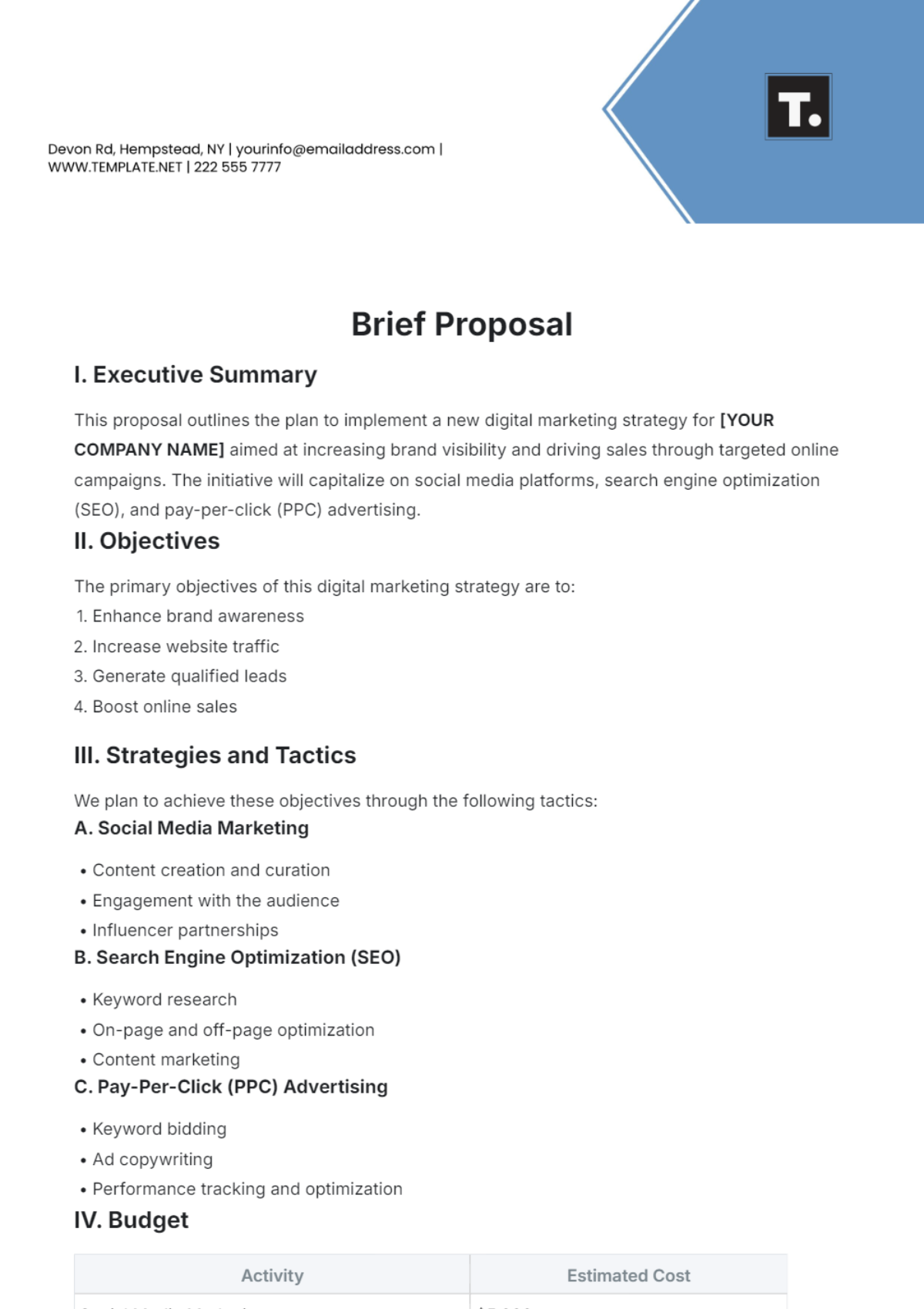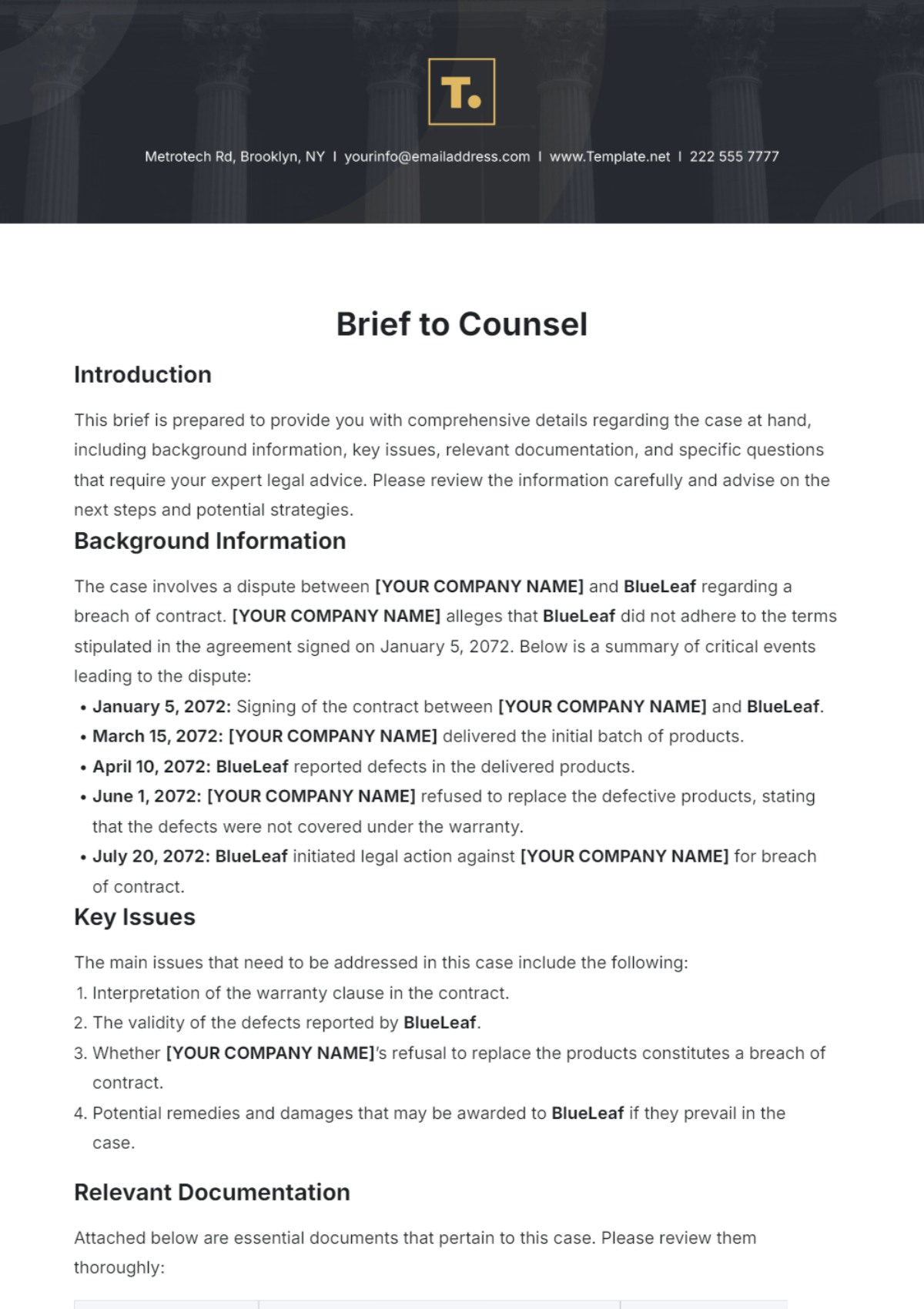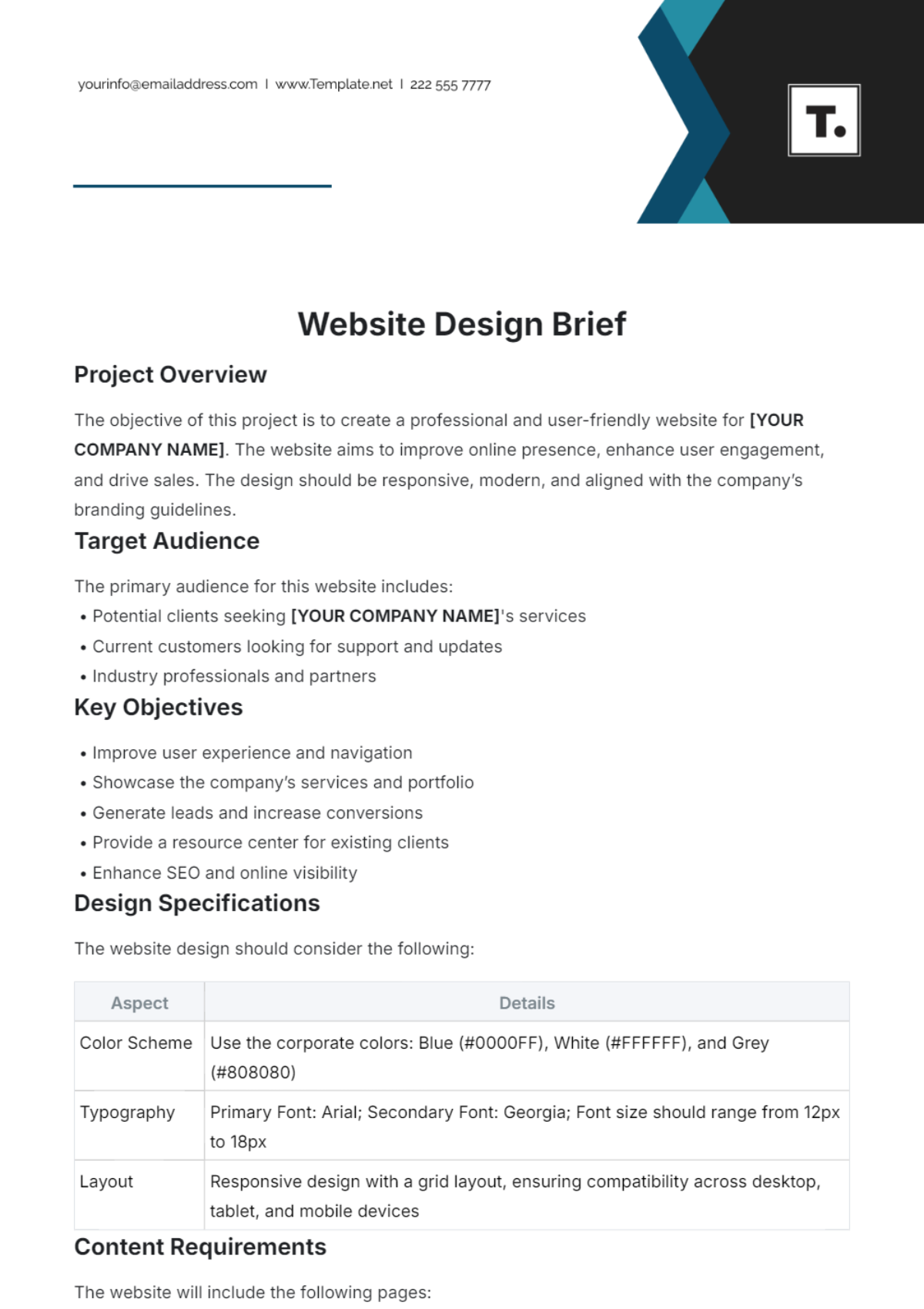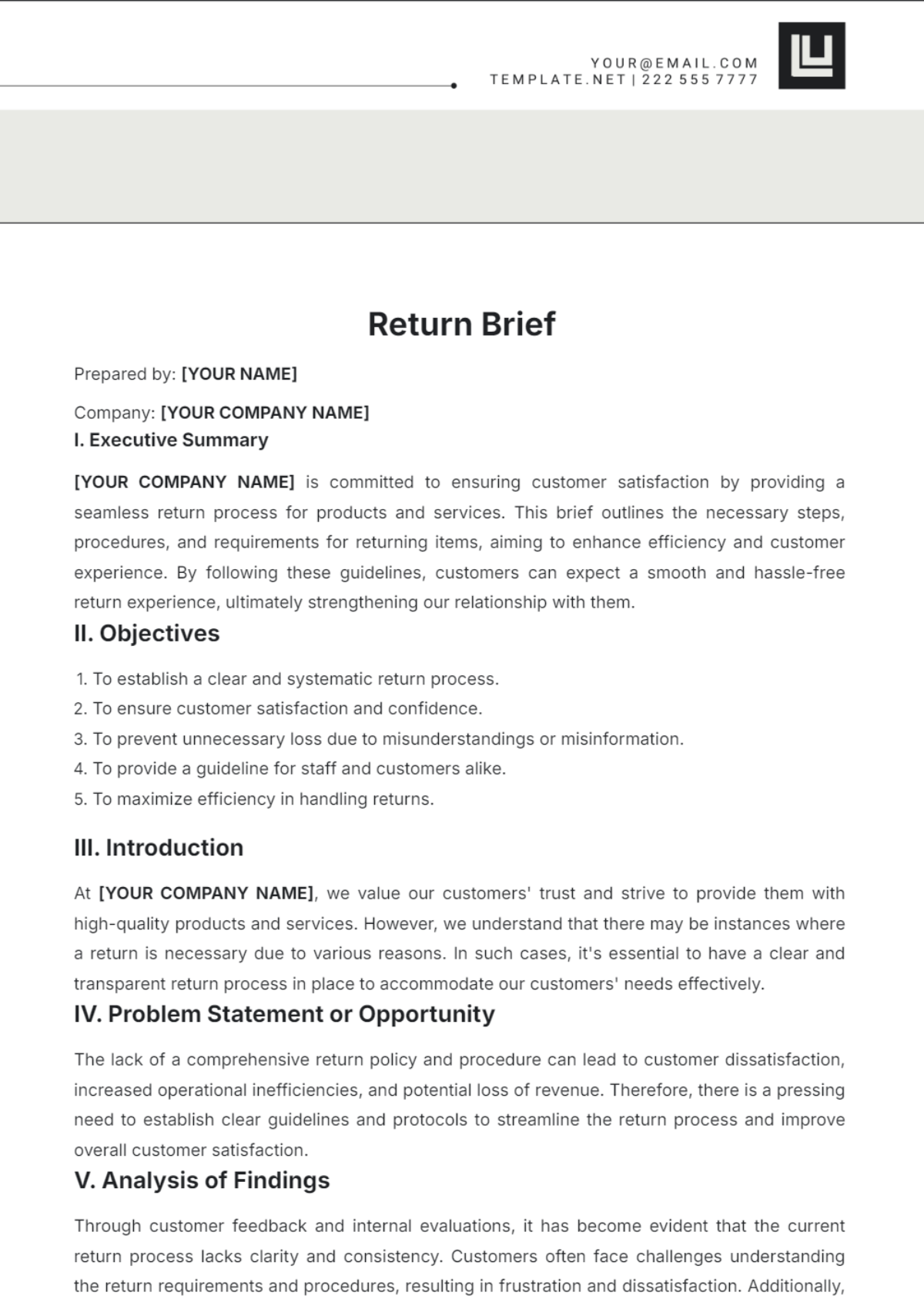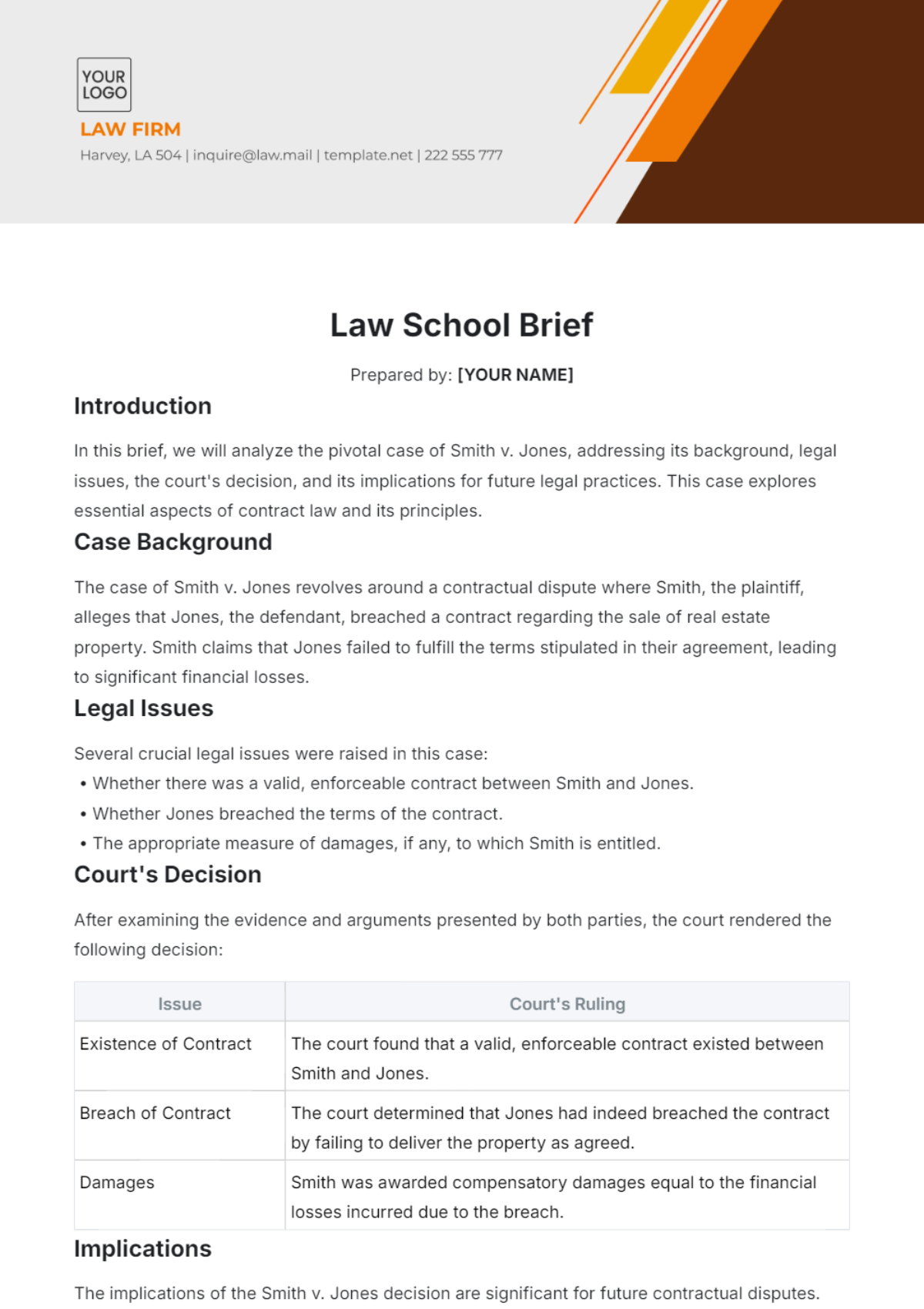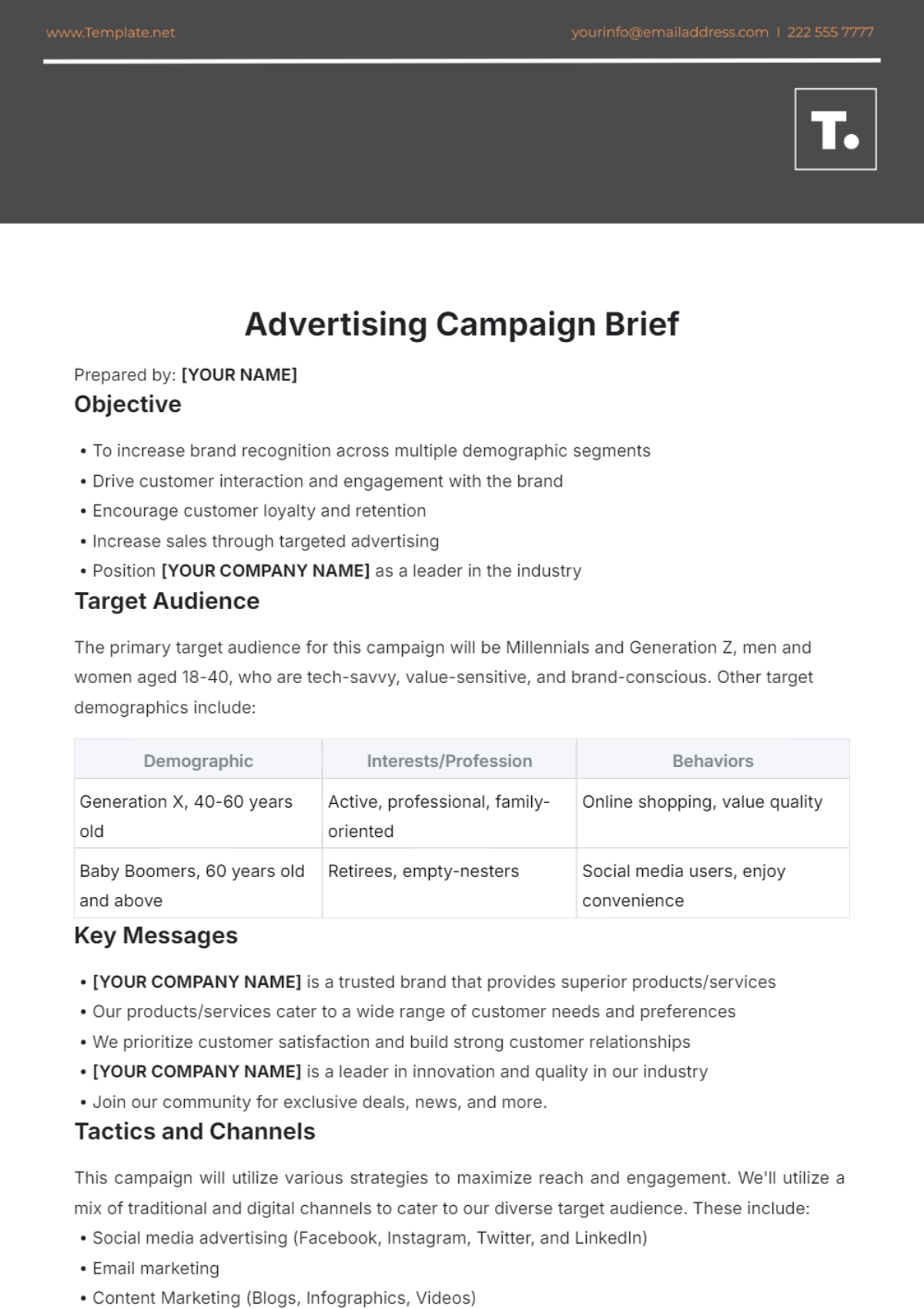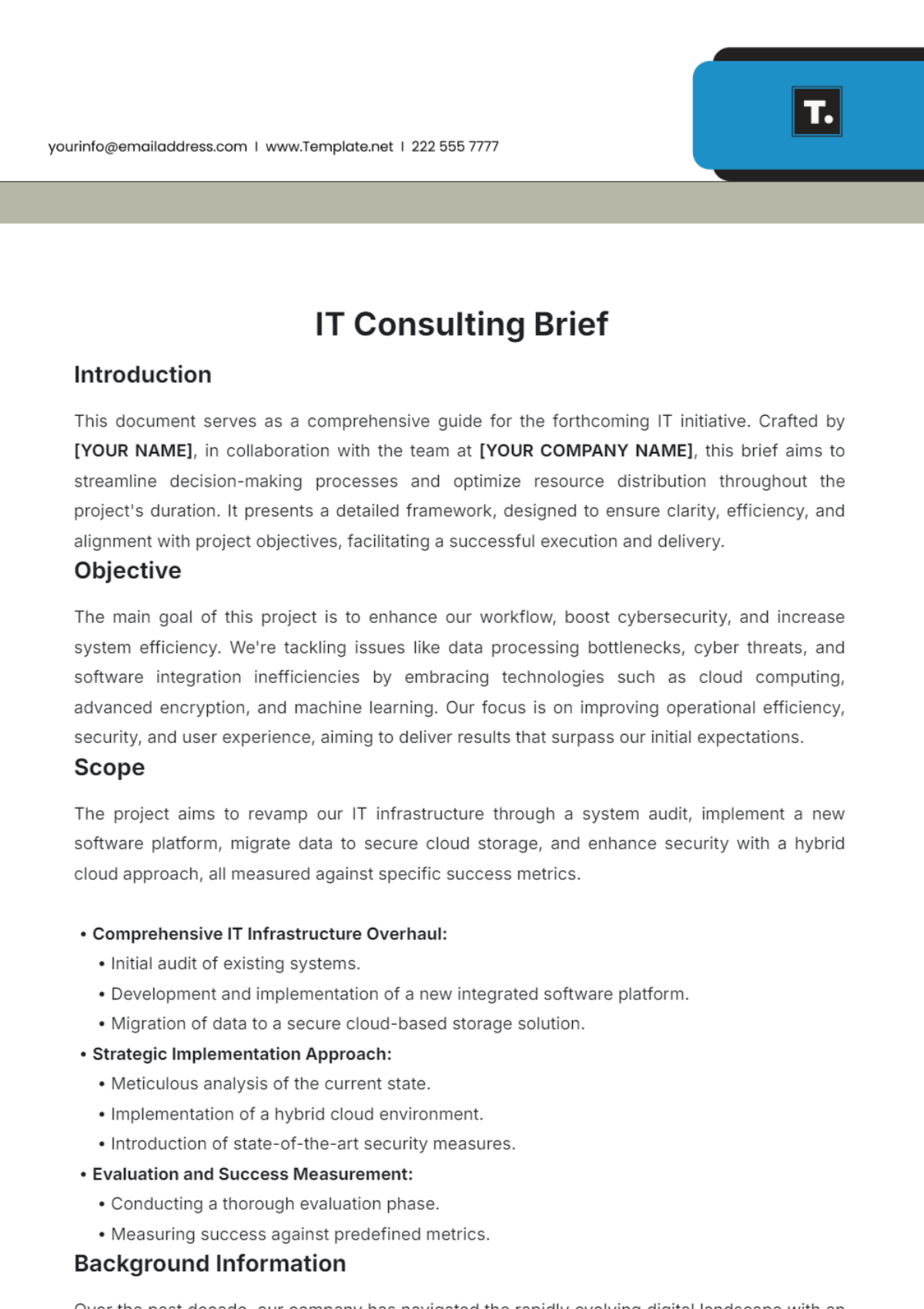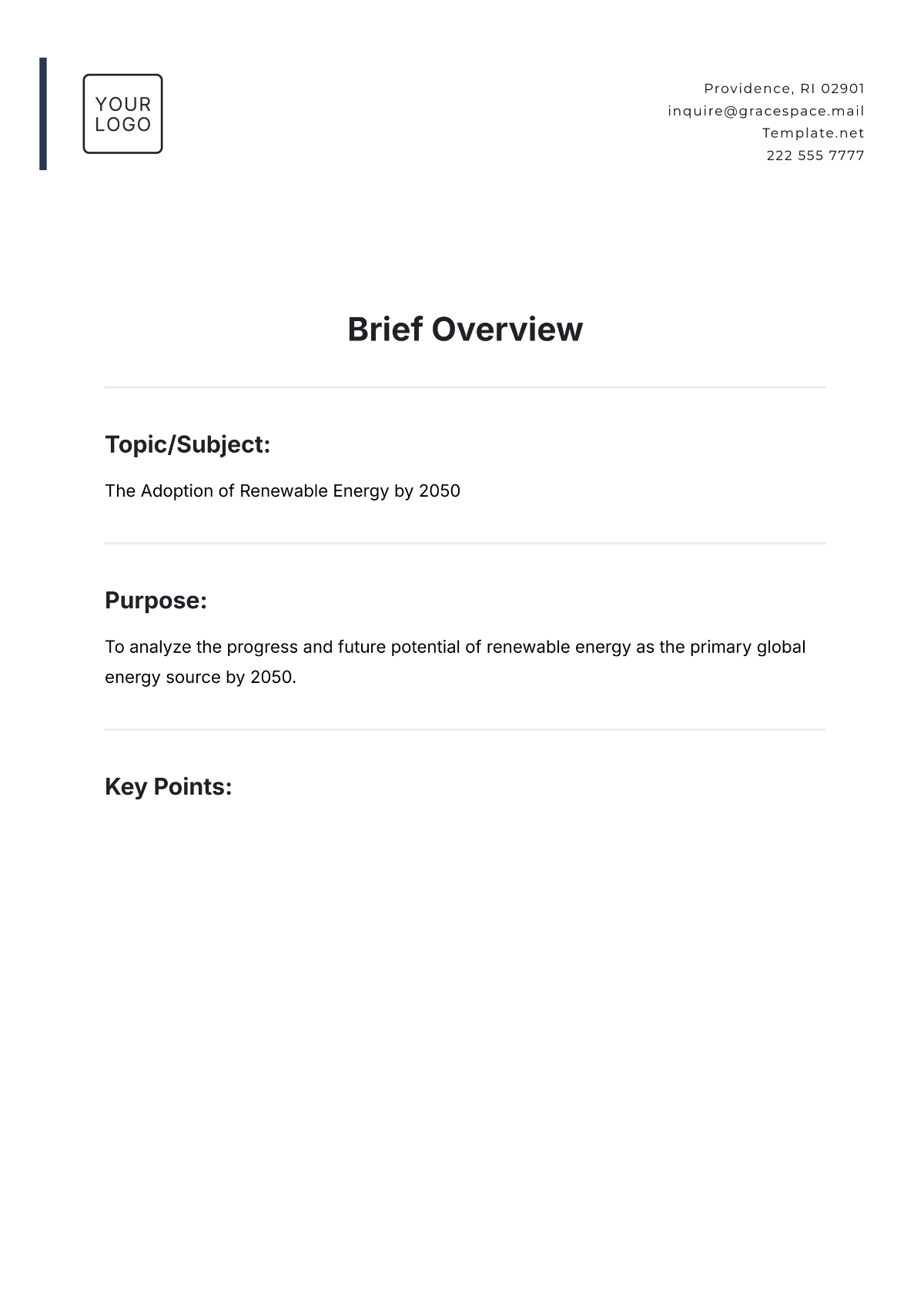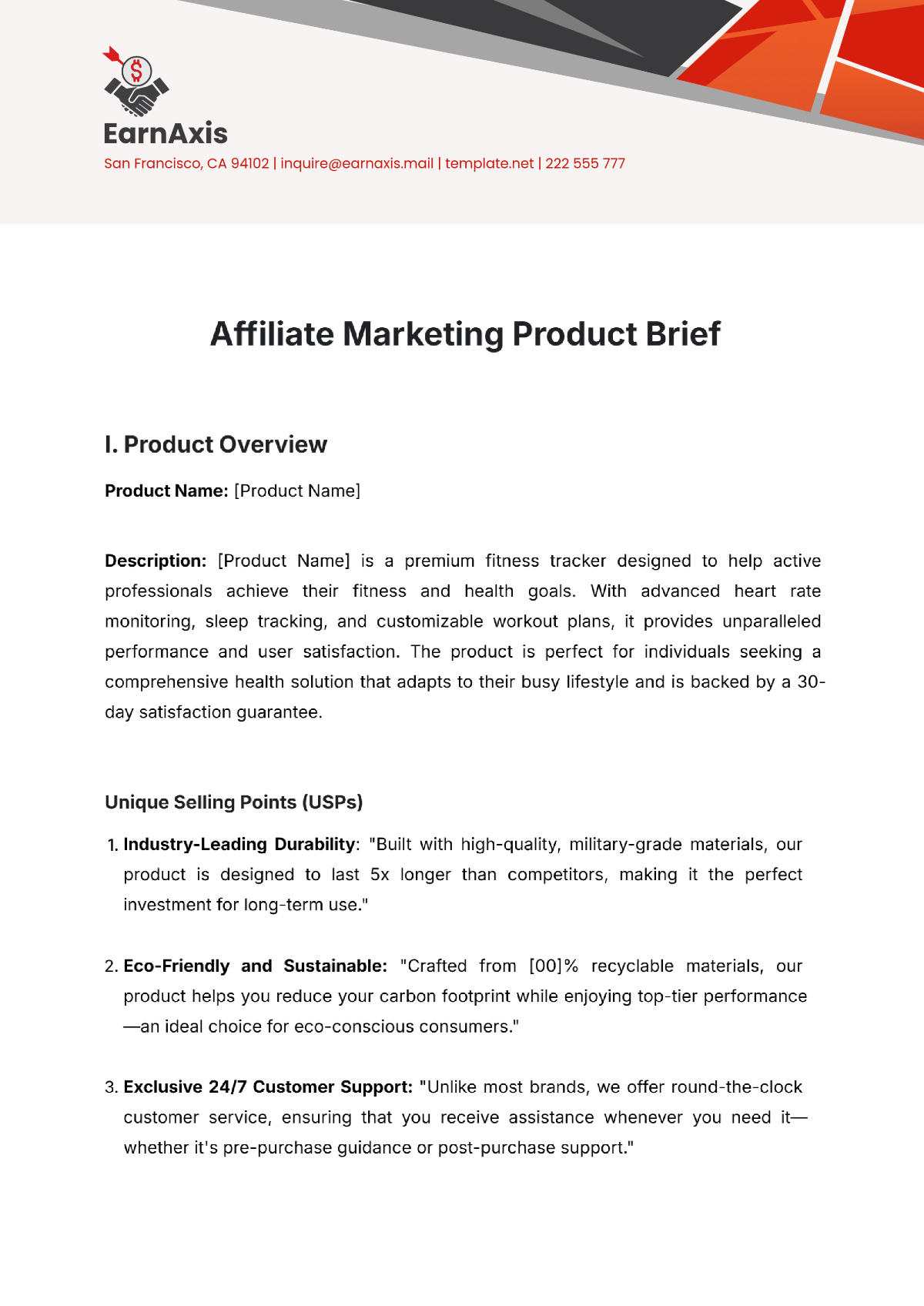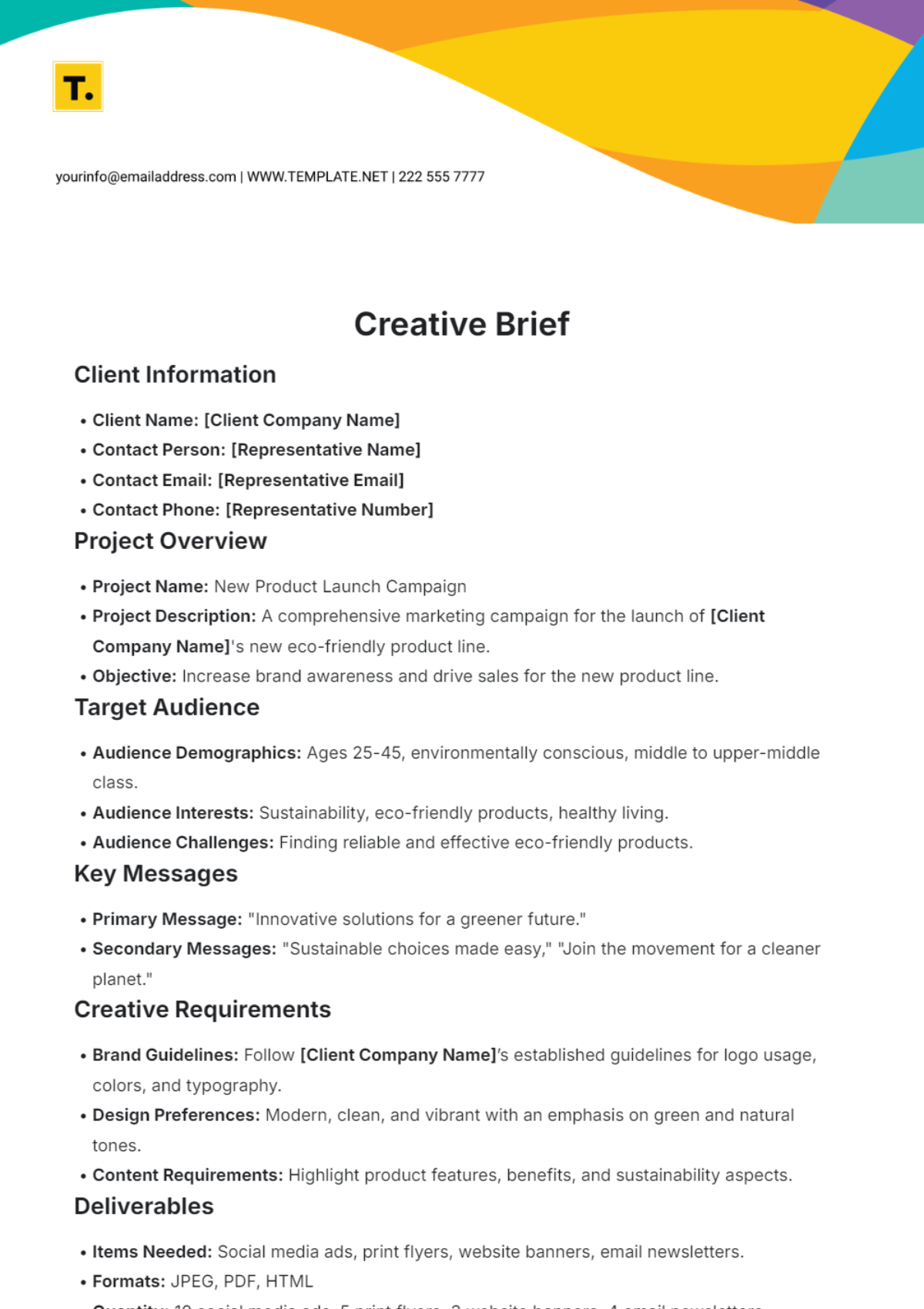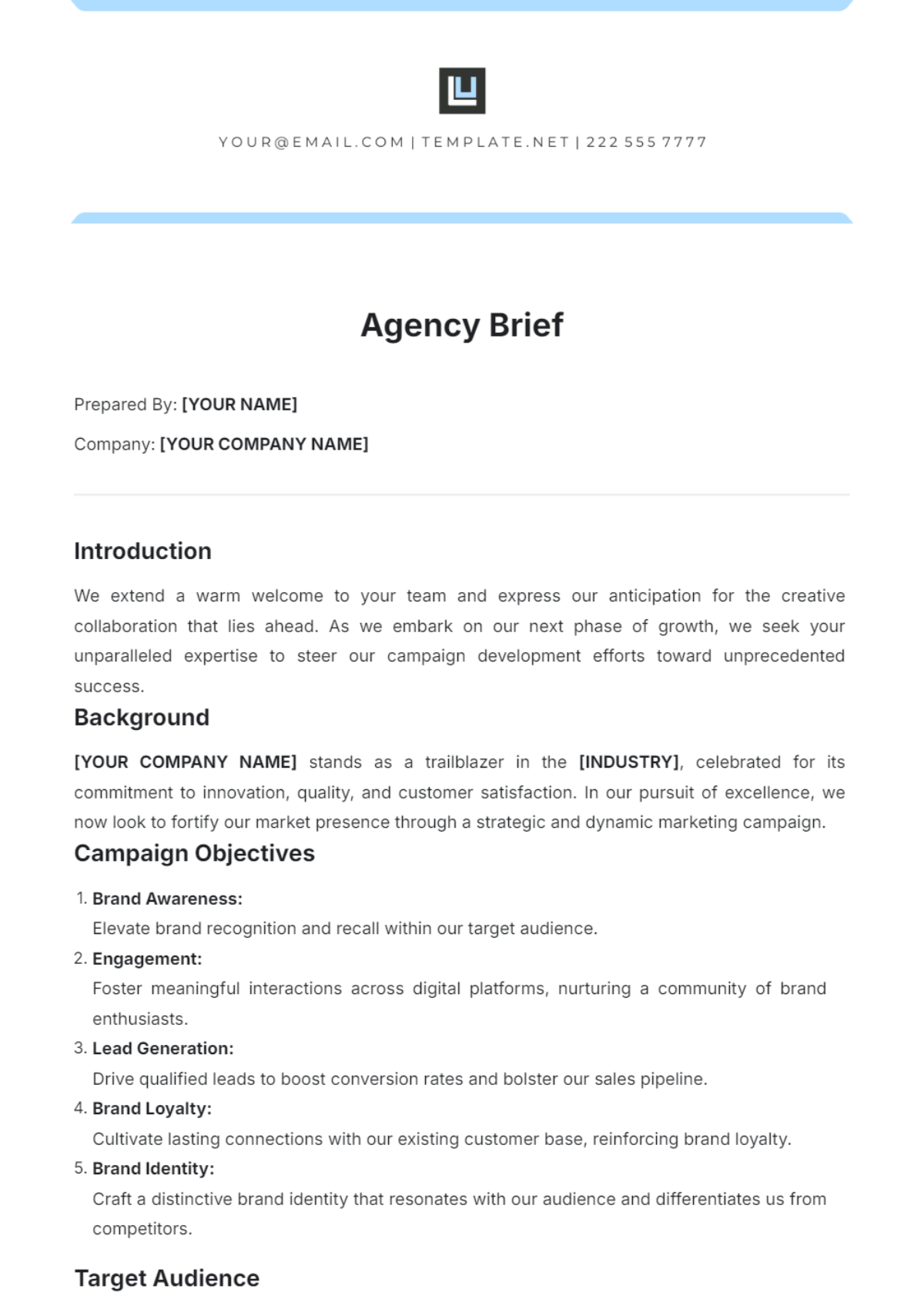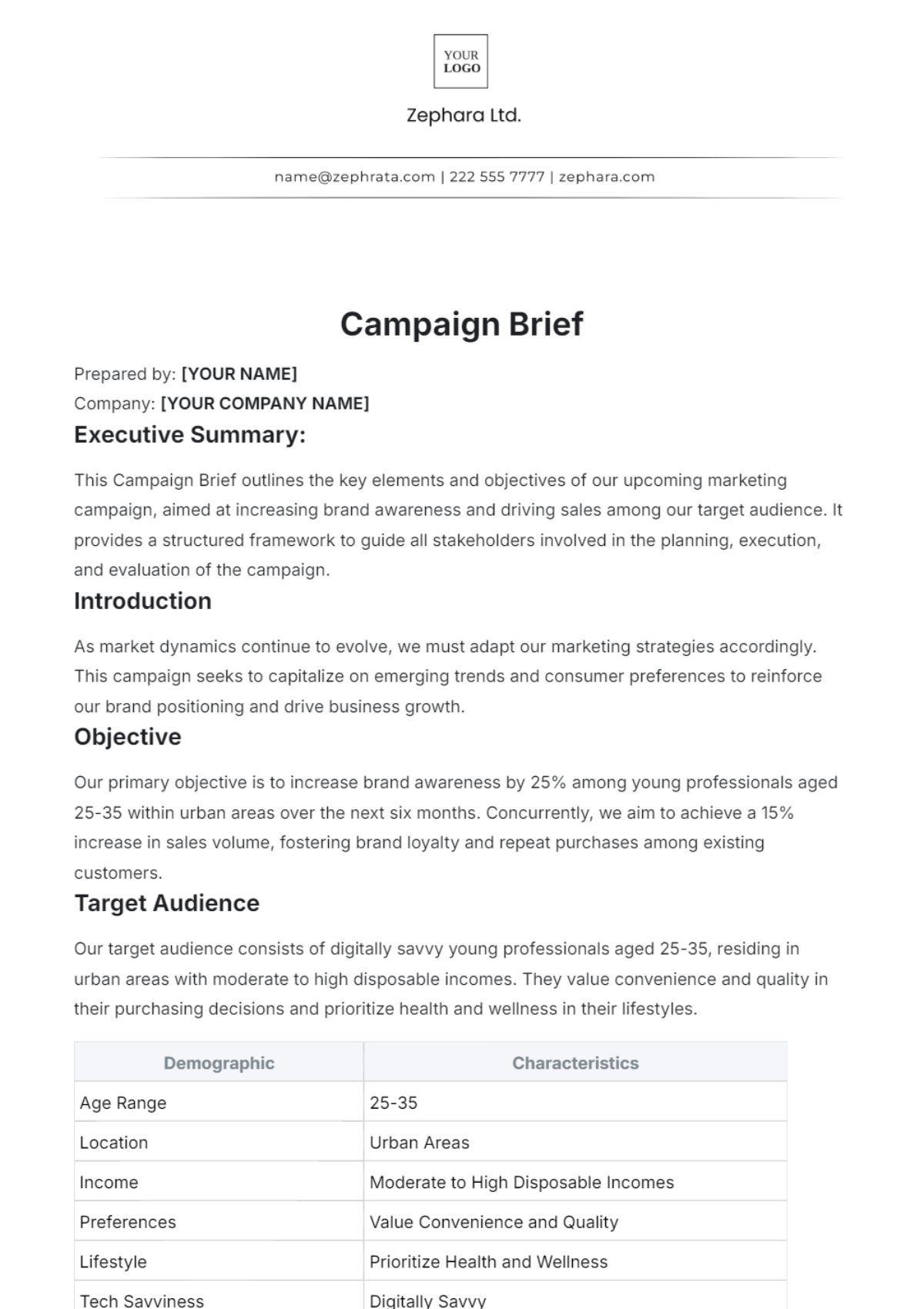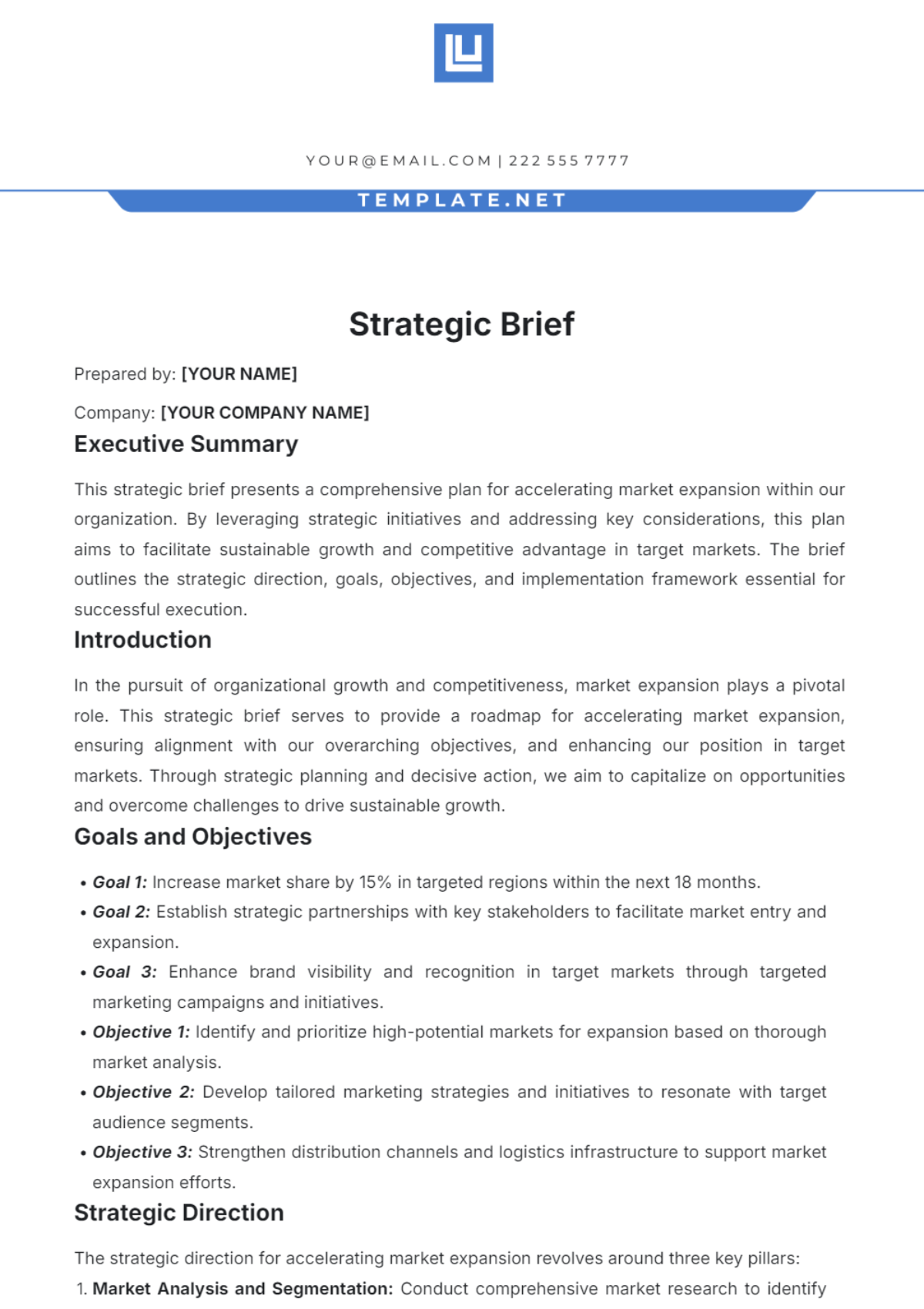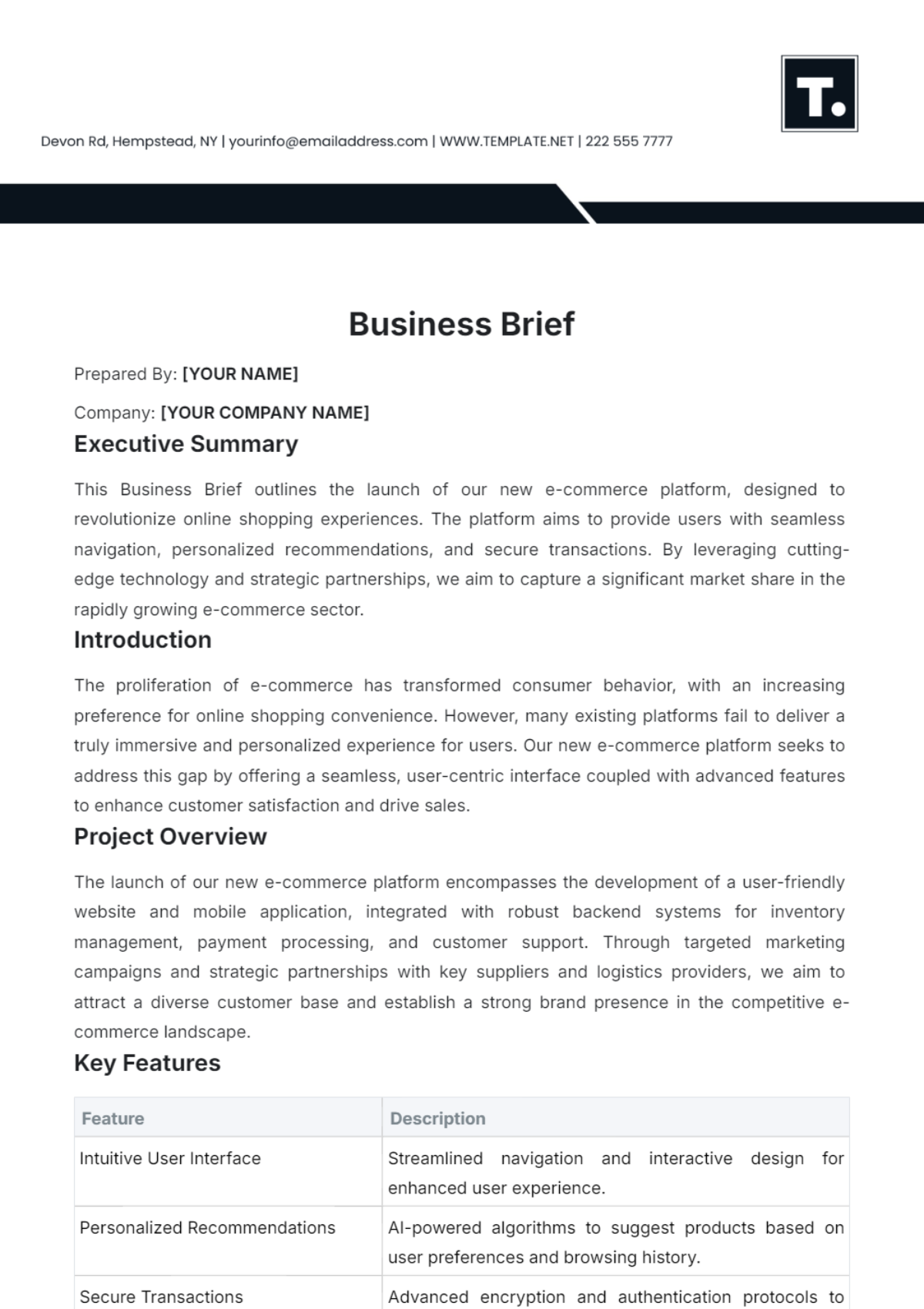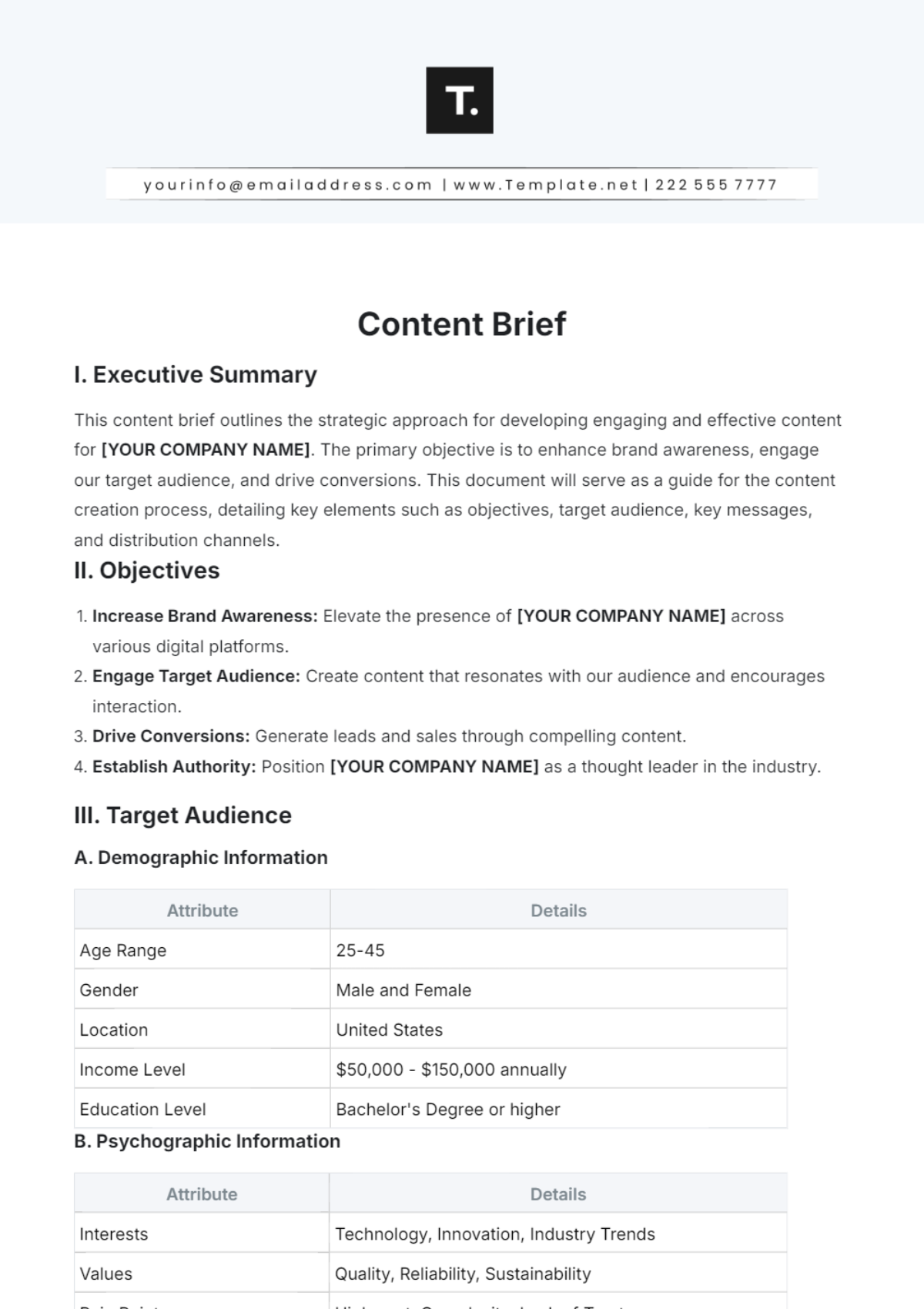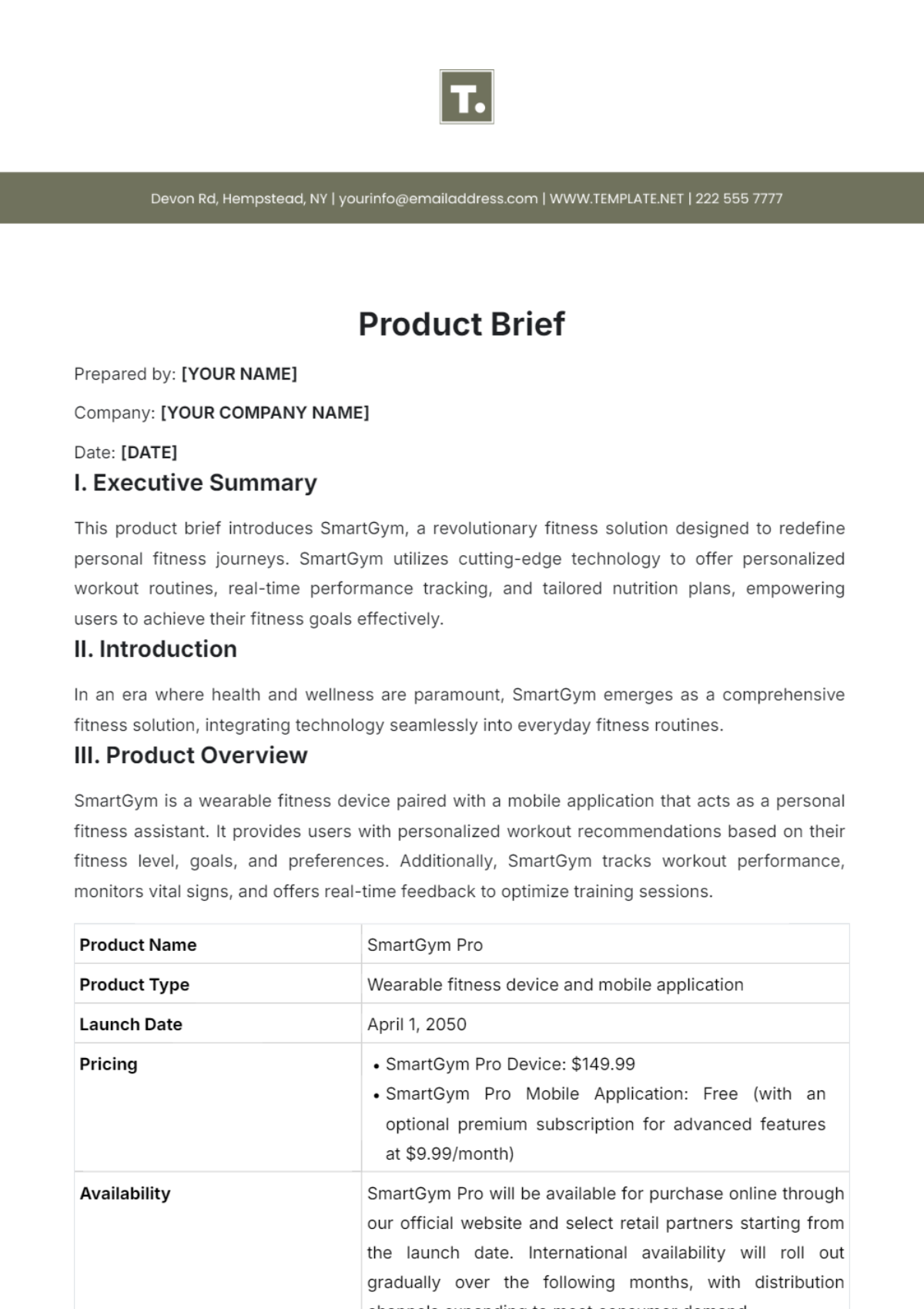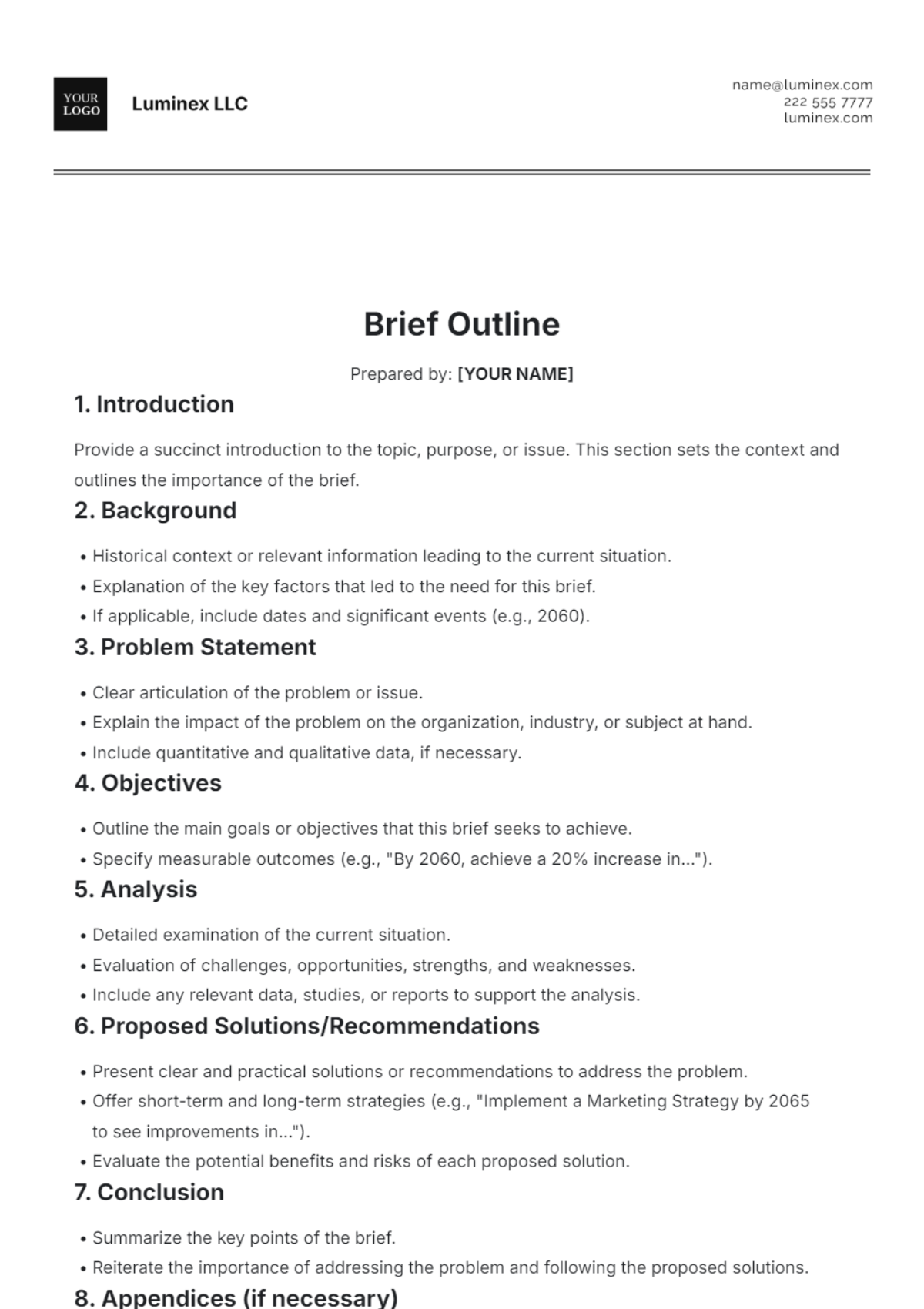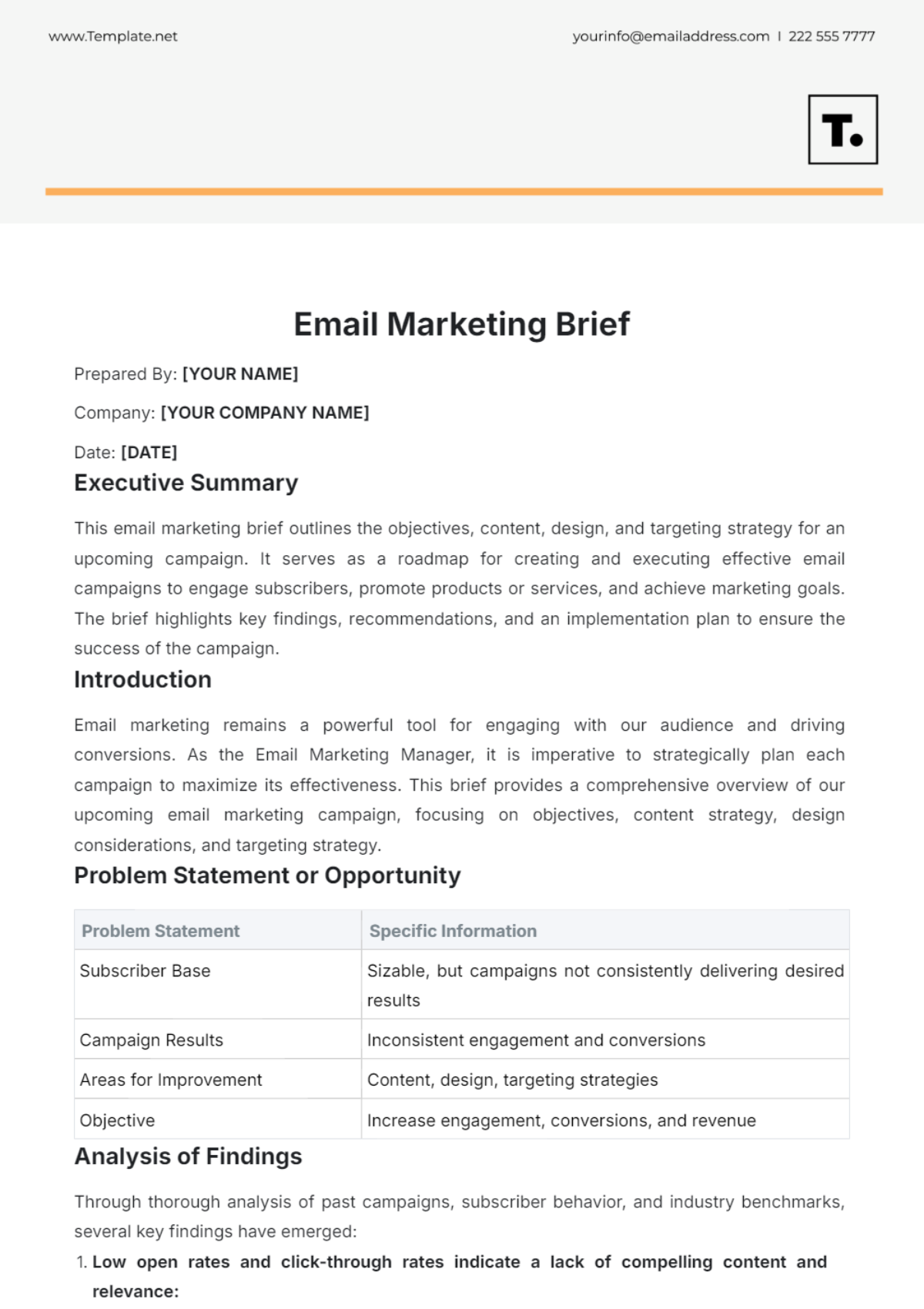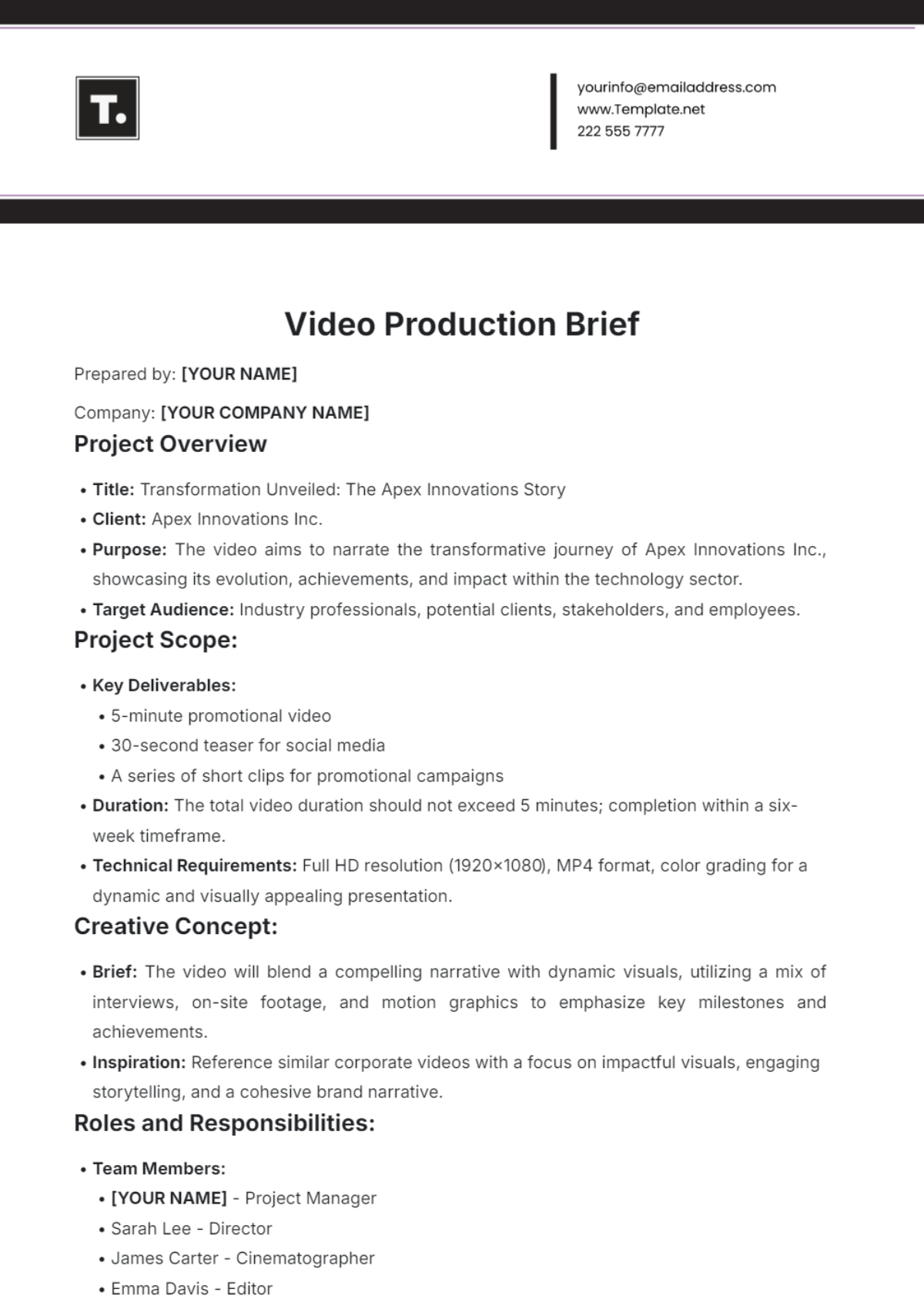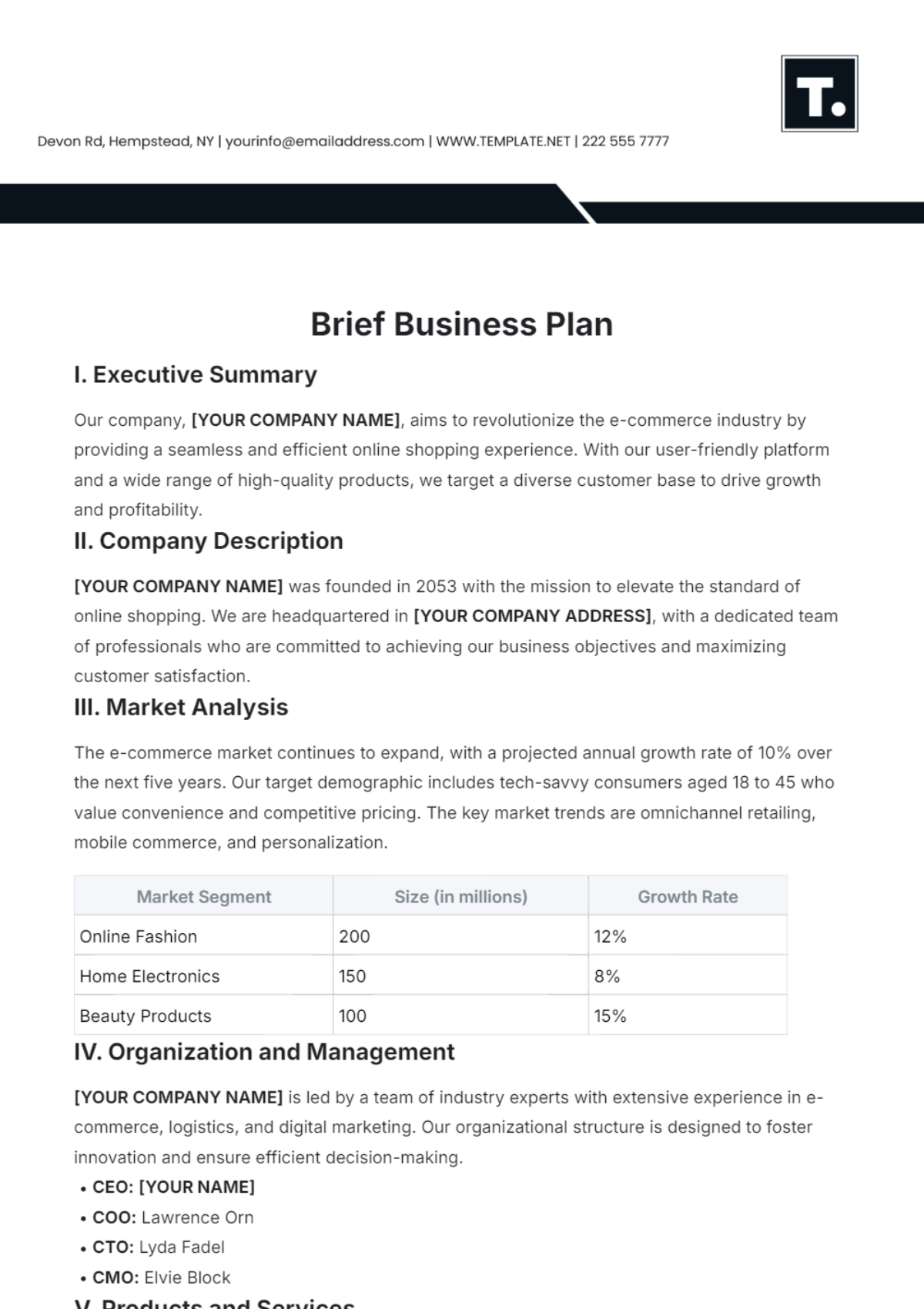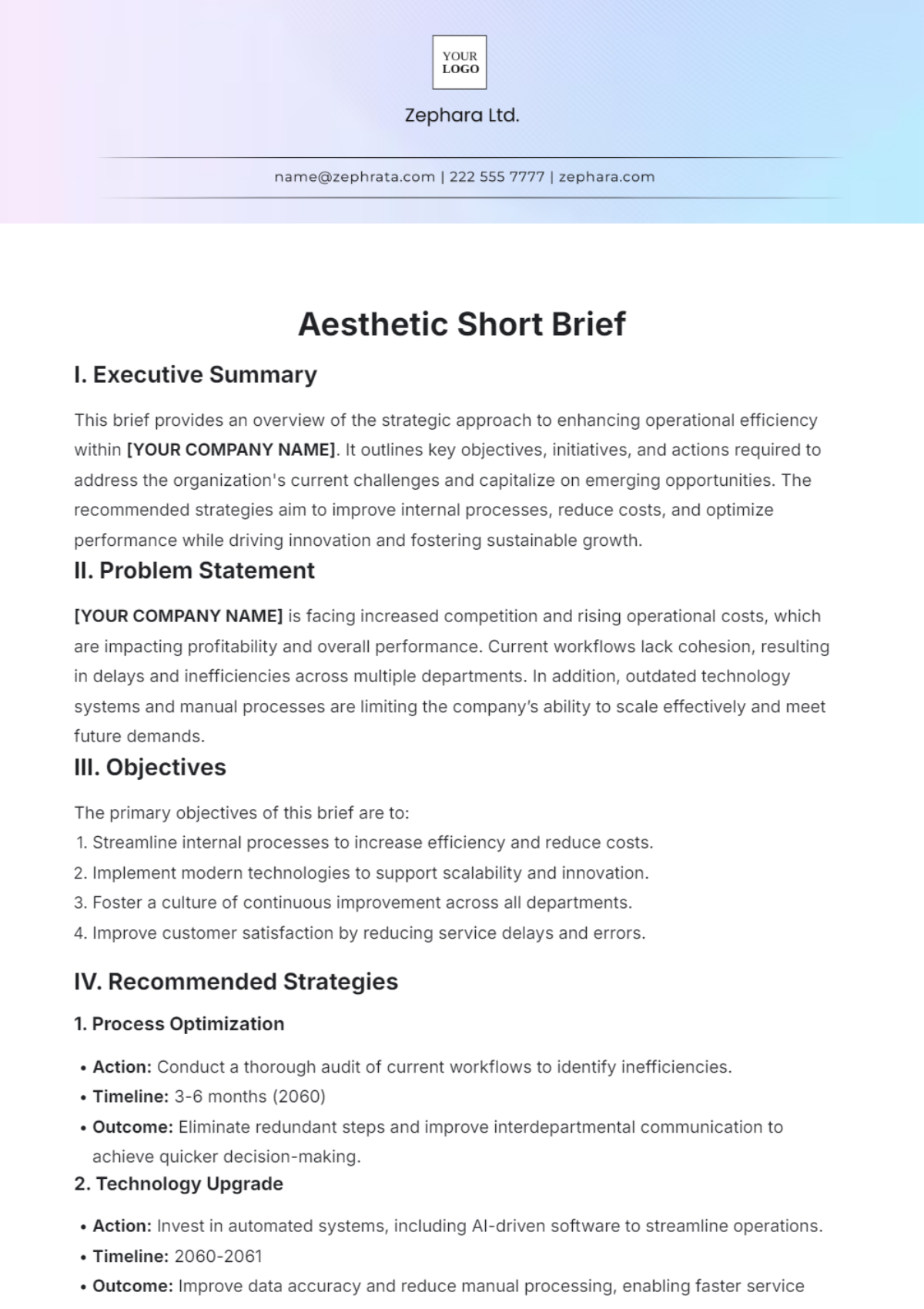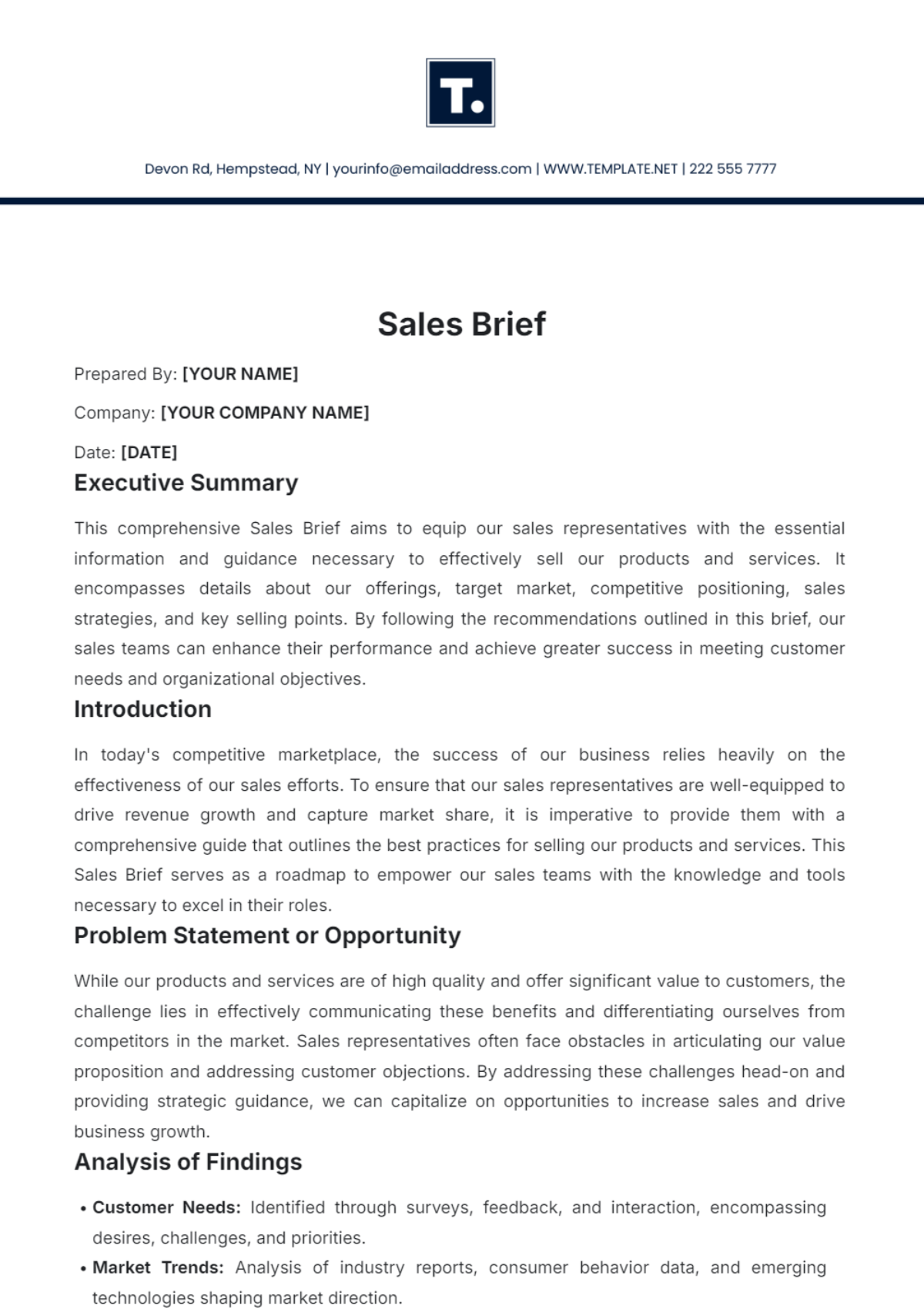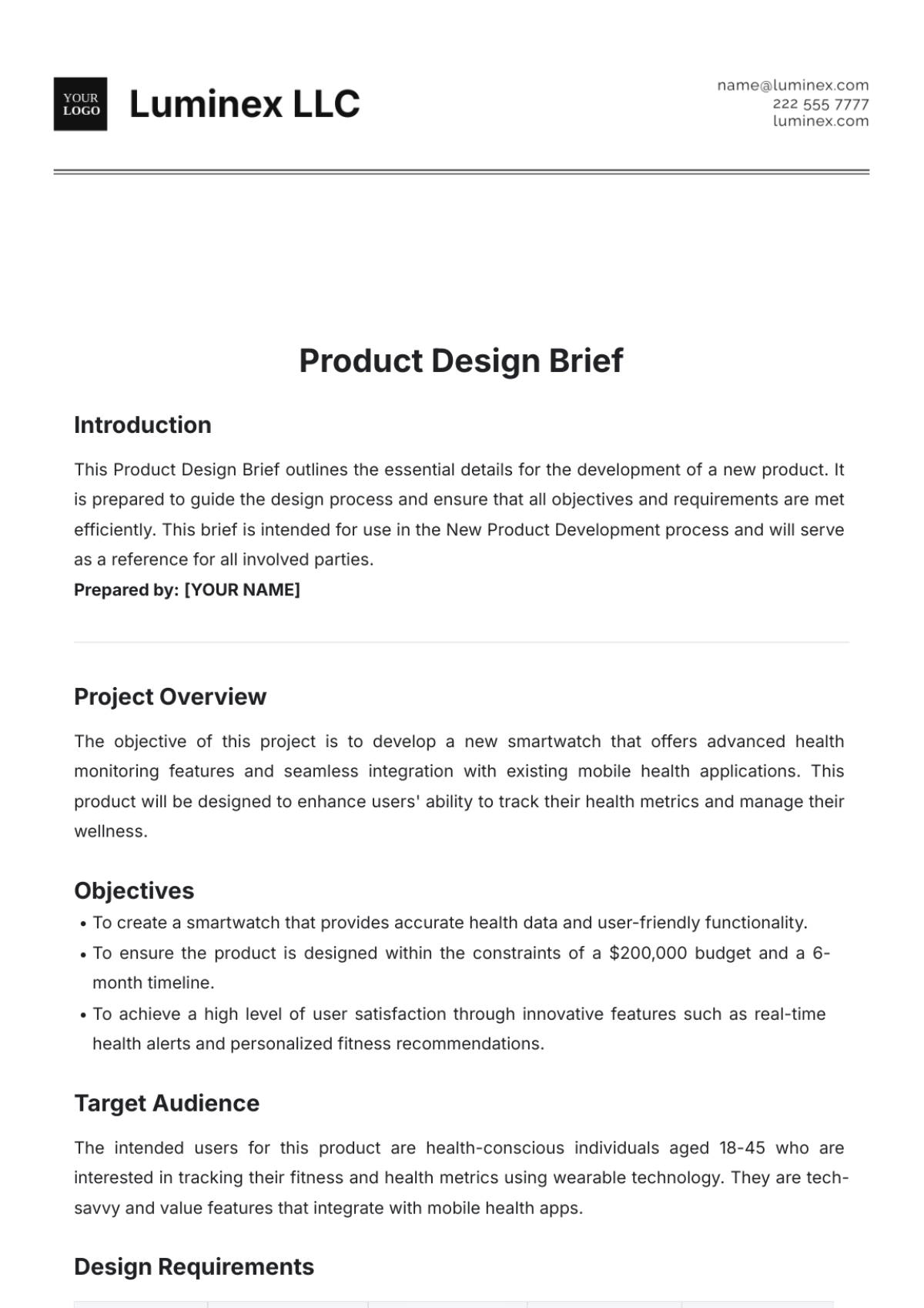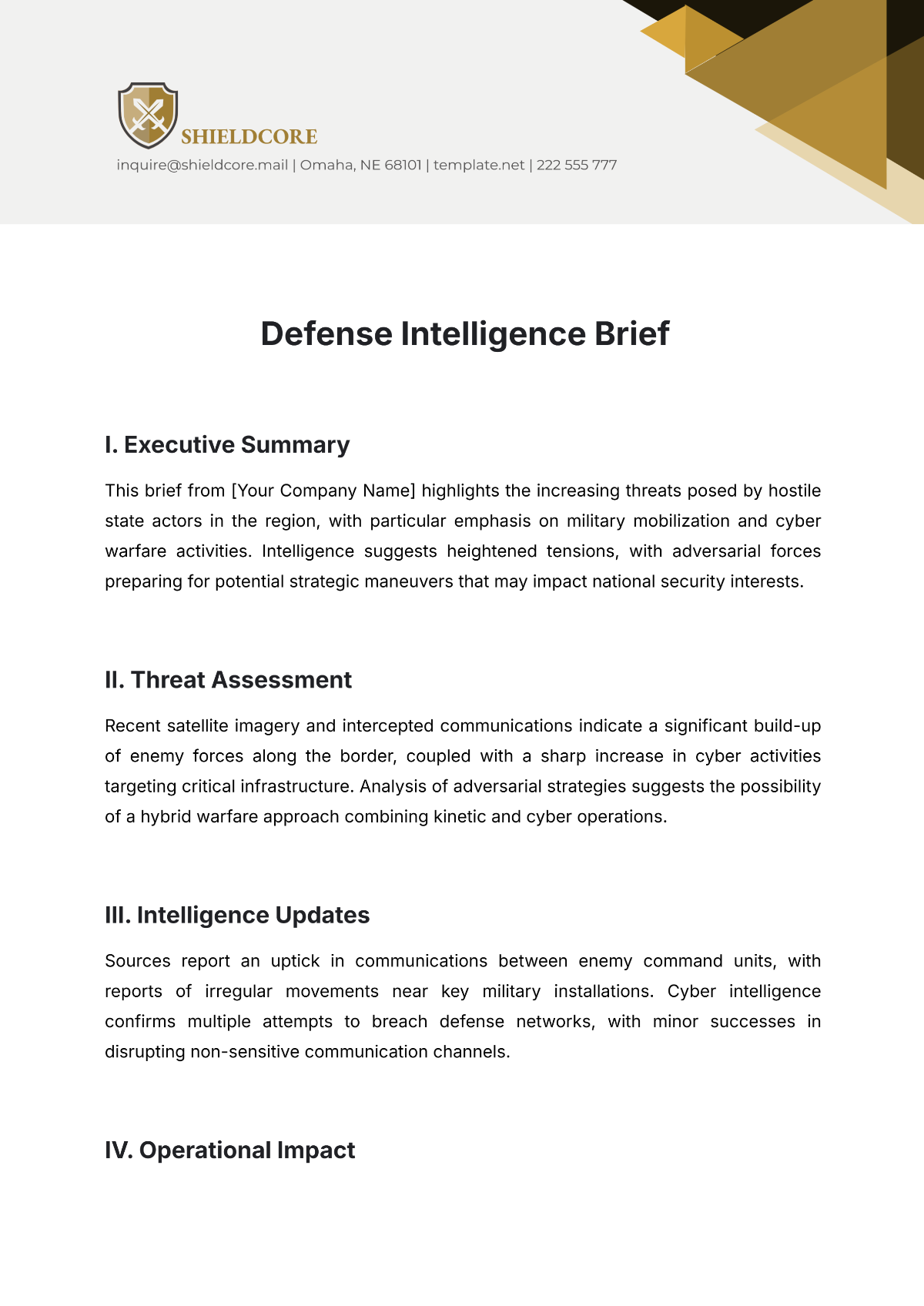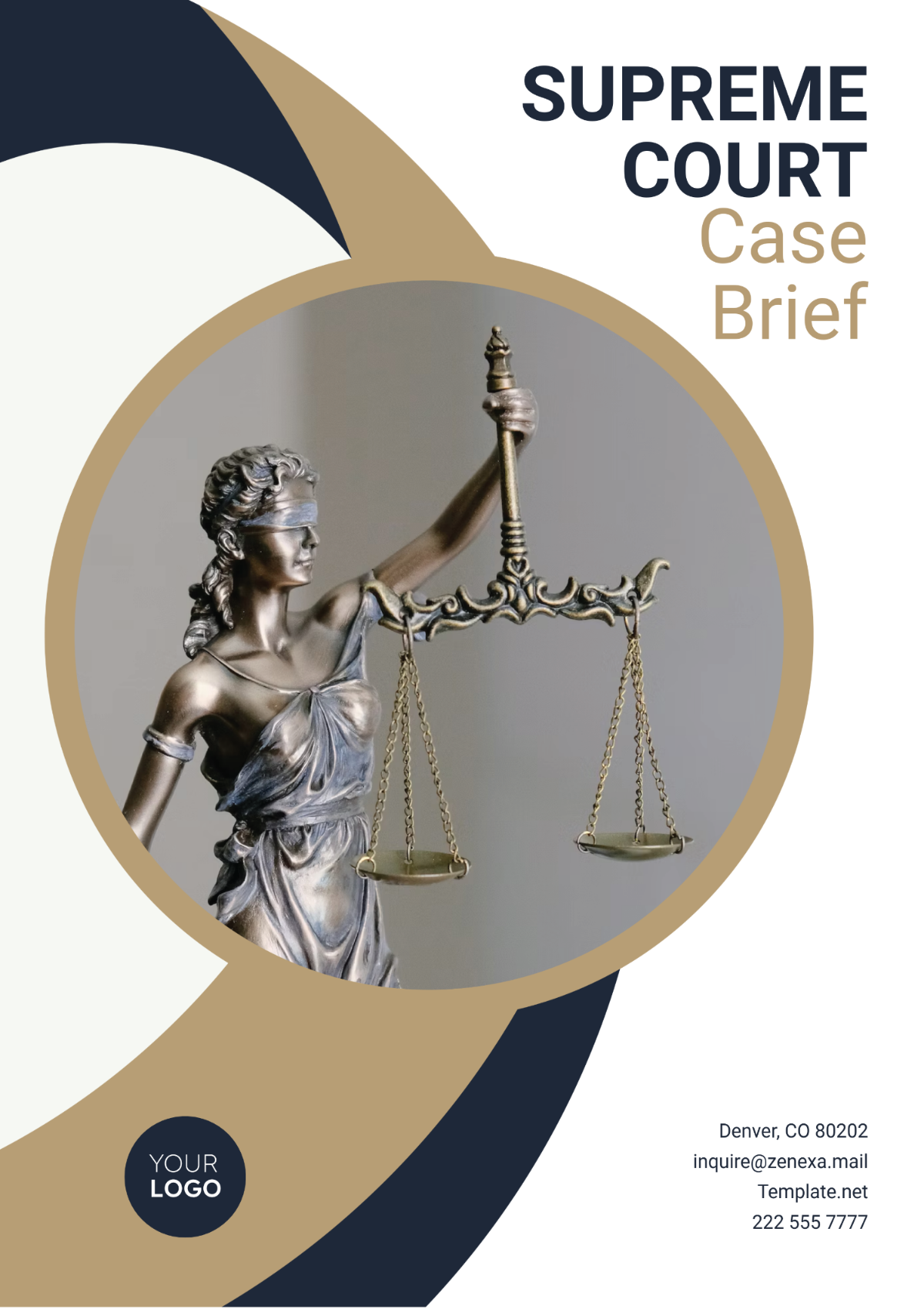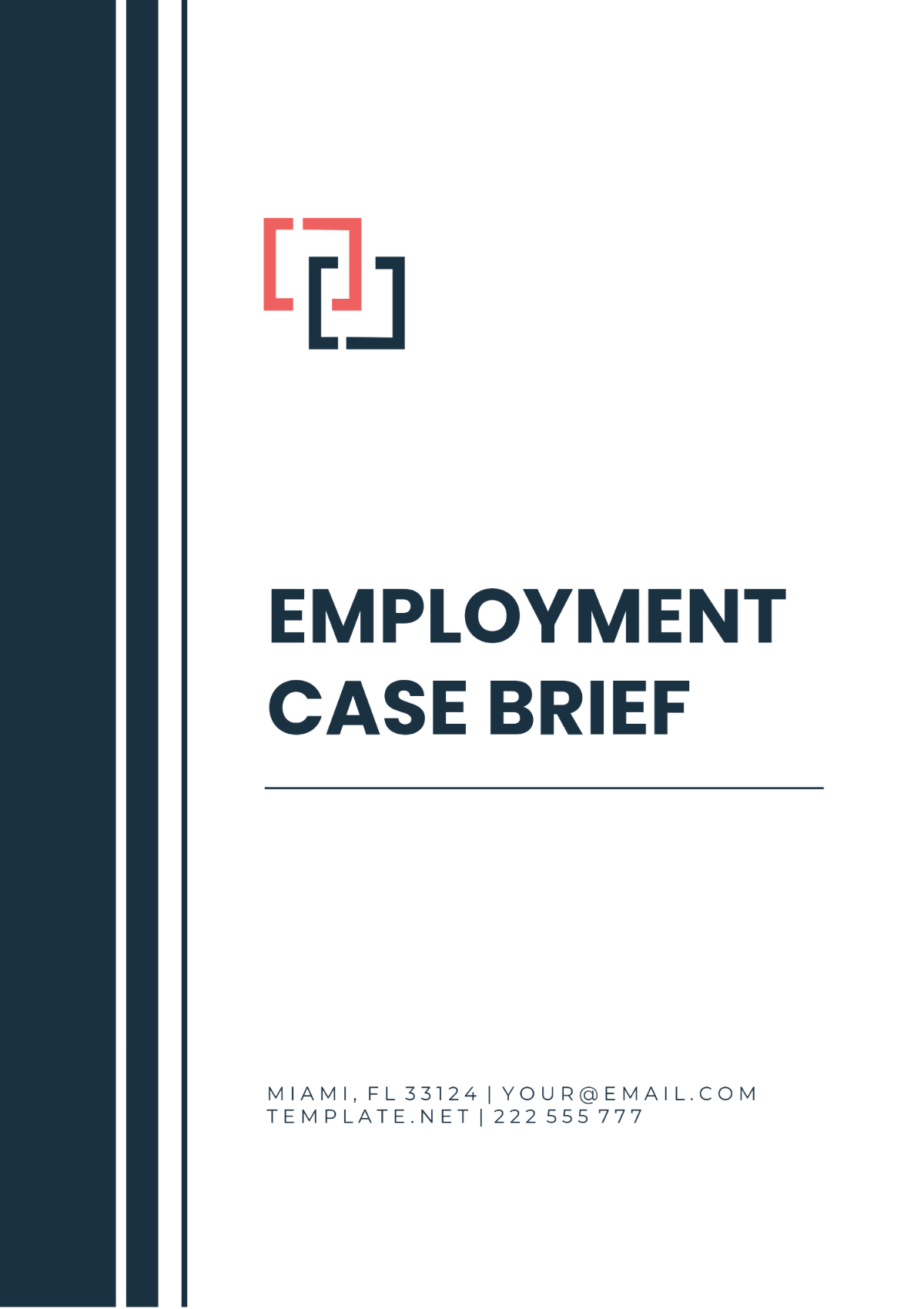Data Verification Brief
Prepared by: [YOUR NAME]
Company: [YOUR COMPANY NAME]
Introduction
In an age where data serves as the cornerstone of decision-making across diverse sectors, the need for rigorous verification procedures is paramount. This data verification brief addresses the pressing importance of ensuring data integrity amidst the deluge of information inundating our digital landscape. By emphasizing the risks associated with unverified data and the potential consequences on decision-making processes, this brief underscores the criticality of robust verification methodologies. It explores a spectrum of verification techniques, from traditional manual fact-checking to cutting-edge technological solutions like machine learning algorithms and blockchain technology, highlighting the necessity of standardized protocols to ensure consistency and reliability. Ultimately, this brief advocates for the adoption of comprehensive verification practices to safeguard the integrity of data and enable informed decision-making in an increasingly data-driven world.
Verification Requirements
Verification requirements are essential criteria and standards that must be met to ensure the accuracy, reliability, and validity of data. These requirements serve as guidelines for evaluating the integrity of information and mitigating the risks associated with errors, biases, and misinformation. Verification requirements typically include:
Data Source Verification: Establishing the credibility and authenticity of the source from which the data originates is fundamental. This involves verifying the reputation, expertise, and reliability of the entity or individual providing the data.
Data Accuracy: Ensuring that the data accurately represents the real-world phenomena it purports to describe. Accuracy verification involves cross-referencing data with multiple sources, fact-checking, and validation through empirical evidence or expert opinions.
Data Completeness: Verifying that the dataset contains all relevant information necessary for its intended purpose. This includes checking for missing or incomplete data points and ensuring that all pertinent variables are accounted for.
Data Consistency: Confirming that the data is internally consistent and free from contradictions or discrepancies. Consistency verification involves checking for coherence among different data sets, periods, or data sources.
Data Relevance: Assessing the relevance of the data to the intended use case or analysis. Relevance verification involves determining whether the data aligns with the objectives, scope, and context of the project or decision-making process.
Data Timeliness: Verifying that the data is up-to-date and reflective of the current state of affairs. Timeliness verification involves assessing the currency of the data and considering the potential impact of any delays or outdated information.
Data Privacy and Security: Ensuring compliance with data protection regulations and safeguarding sensitive information against unauthorized access, disclosure, or misuse. Privacy and security verification involves implementing encryption, access controls, and data anonymization techniques.
Data Integrity: Verifying the integrity of the data to detect and prevent tampering, manipulation, or corruption. Integrity verification involves implementing checksums, digital signatures, and audit trails to ensure data remains unchanged and trustworthy.
By adhering to these verification requirements, organizations can enhance the reliability and trustworthiness of their data, enabling more informed decision-making and mitigating the risks associated with inaccurate or unreliable information.
Verification Process
The verification process is a systematic approach used to confirm the accuracy, reliability, and validity of data. It involves a series of steps and procedures designed to ensure that the information being assessed meets predefined verification requirements. The verification process typically includes the following key stages:
Define Verification Objectives: Establish the goals and objectives of the verification process. Identify the specific aspects of the data that need to be verified and the desired outcomes of the verification efforts.
Identify Data Sources: Determine the sources from which the data was obtained and gather relevant documentation or information about the data's origin, including metadata, timestamps, and source credibility.
Data Collection: Collect the data to be verified from the identified sources, ensuring that it is complete, accurate, and representative of the information required for analysis or decision-making.
Data Cleaning and Preparation: Preprocess the data to remove any inconsistencies, errors, or duplicates that may affect the accuracy and reliability of the verification process. This may involve standardizing formats, resolving missing values, and reconciling discrepancies.
Verification Methods Selection: Choose appropriate verification methods and techniques based on the nature of the data and the verification objectives. This may include manual verification, automated checks, statistical analysis, cross-referencing with external sources, and expert review.
Execute Verification Procedures: Implement the selected verification methods to assess the quality, integrity, and completeness of the data. This may involve conducting data comparisons, validation checks, fact-checking, and data profiling to identify discrepancies or anomalies.
Document Findings: Document the results of the verification process, including any discrepancies, errors, or inconsistencies uncovered during the assessment. Record details of the verification methods used, the data sources examined, and any corrective actions taken.
Analysis and Interpretation: Analyze the verified data to draw meaningful insights and conclusions. Evaluate the implications of the verification findings on the overall reliability and trustworthiness of the data.
Reporting and Communication: Prepare a comprehensive verification report summarizing the findings, methodologies, and outcomes of the verification process. Communicate the results to stakeholders, decision-makers, or relevant parties, highlighting any potential risks or limitations identified.
Feedback and Continuous Improvement: Solicit feedback from stakeholders and incorporate lessons learned from the verification process to enhance future data collection, verification, and management practices. Continuously refine verification procedures to adapt to changing requirements and emerging challenges.
By following a systematic verification process, organizations can ensure the integrity and reliability of their data, enabling more informed decision-making and mitigating the risks associated with inaccurate or unreliable information.
Compliance and Regulations
Compliance and regulations regarding data verification encompass a range of legal and industry-specific requirements aimed at ensuring the integrity, confidentiality, and security of data. These regulations serve to protect individuals' privacy, prevent unauthorized access or misuse of sensitive information, and promote transparency and accountability in data handling practices. Some key compliance and regulations about data verification include:
General Data Protection Regulation (GDPR): Enforced by the European Union (EU), GDPR establishes rules for the protection of personal data and imposes requirements on organizations regarding data collection, processing, storage, and transfer. It includes provisions for obtaining consent, ensuring data accuracy, and implementing appropriate security measures.
Health Insurance Portability and Accountability Act (HIPAA): HIPAA sets standards for the protection of patients' health information in the United States. It requires healthcare organizations to implement safeguards to ensure the confidentiality, integrity, and availability of electronic protected health information (ePHI).
Payment Card Industry Data Security Standard (PCI DSS): PCI DSS outlines security standards for organizations that handle credit card payments. It mandates measures to protect cardholder data, including encryption, access controls, and regular security assessments.
Sarbanes-Oxley Act (SOX): SOX imposes requirements on publicly traded companies in the United States to ensure the accuracy and reliability of financial reporting. It includes provisions related to data accuracy, internal controls, and accountability of executives.
California Consumer Privacy Act (CCPA): CCPA grants California residents certain rights regarding the collection, use, and disclosure of their personal information by businesses. It requires organizations to provide transparency about data practices and gives individuals control over their data.
ISO/IEC 27001: ISO/IEC 27001 is an international standard for information security management systems (ISMS). It provides a framework for organizations to establish, implement, maintain, and continually improve their data security practices, including data verification processes.
Financial Industry Regulatory Authority (FINRA) Regulations: FINRA regulations govern securities firms in the United States and include requirements related to the accuracy and reliability of financial data, as well as data retention and reporting.
Industry-Specific Regulations: Various industries have specific regulations governing data verification and security, such as the Federal Information Security Management Act (FISMA) for federal agencies, the Family Educational Rights and Privacy Act (FERPA) for educational institutions, and the Gramm-Leach-Bliley Act (GLBA) for financial institutions.
Organizations are required to comply with these regulations by implementing appropriate data verification processes, security measures, and privacy practices. Failure to comply can result in legal penalties, financial losses, reputational damage, and loss of customer trust. Therefore, organizations need to stay informed about relevant compliance requirements and ensure that their data verification practices align with regulatory standards.
Conclusion
In conclusion, data verification is a critical process that ensures the accuracy, reliability, and integrity of information across various sectors and industries. In today's data-driven world, where decisions are increasingly based on data analysis and insights, the importance of robust verification practices cannot be overstated. Throughout this brief, we've explored the significance of data verification in mitigating the risks associated with misinformation, errors, and data manipulation. We've discussed key verification requirements, methodologies, and tools essential for establishing trustworthiness and reliability in data. Additionally, we've highlighted the importance of compliance with relevant regulations and standards to safeguard data privacy, security, and integrity. By adopting comprehensive verification processes, organizations can make informed decisions, mitigate risks, and uphold the trust of stakeholders and the public in the data they rely on. As we continue to navigate an ever-evolving data landscape, prioritizing data verification will remain essential for maintaining the integrity and credibility of information in support of informed decision-making and sustainable outcomes.

